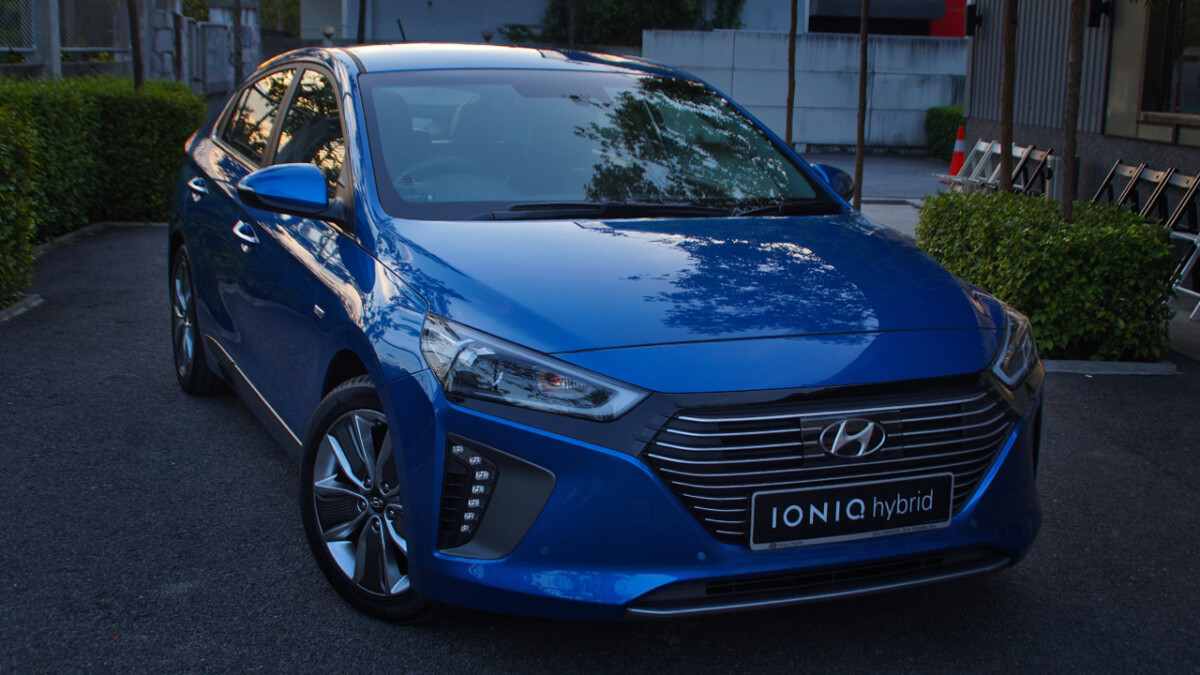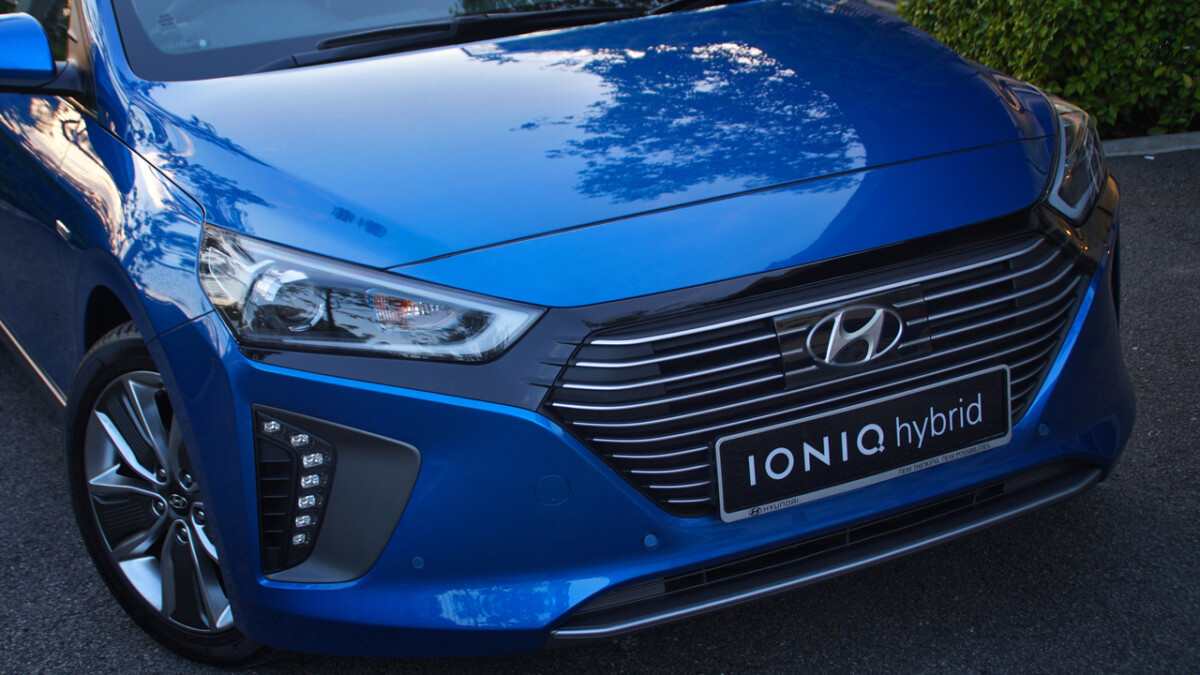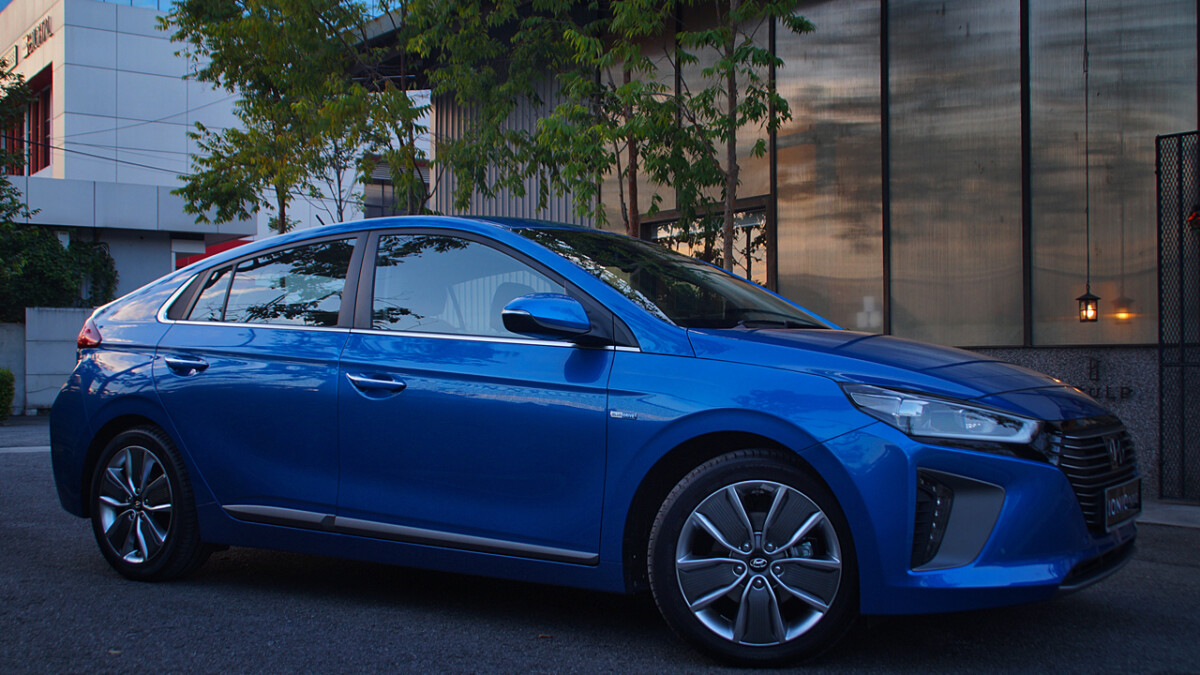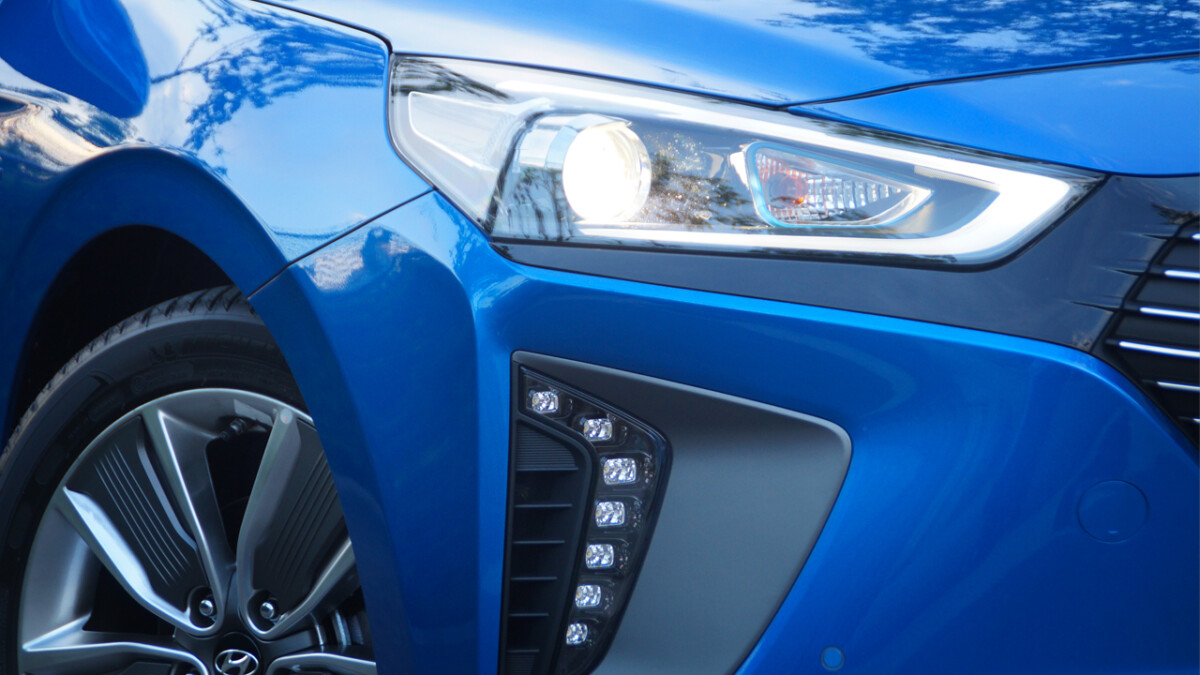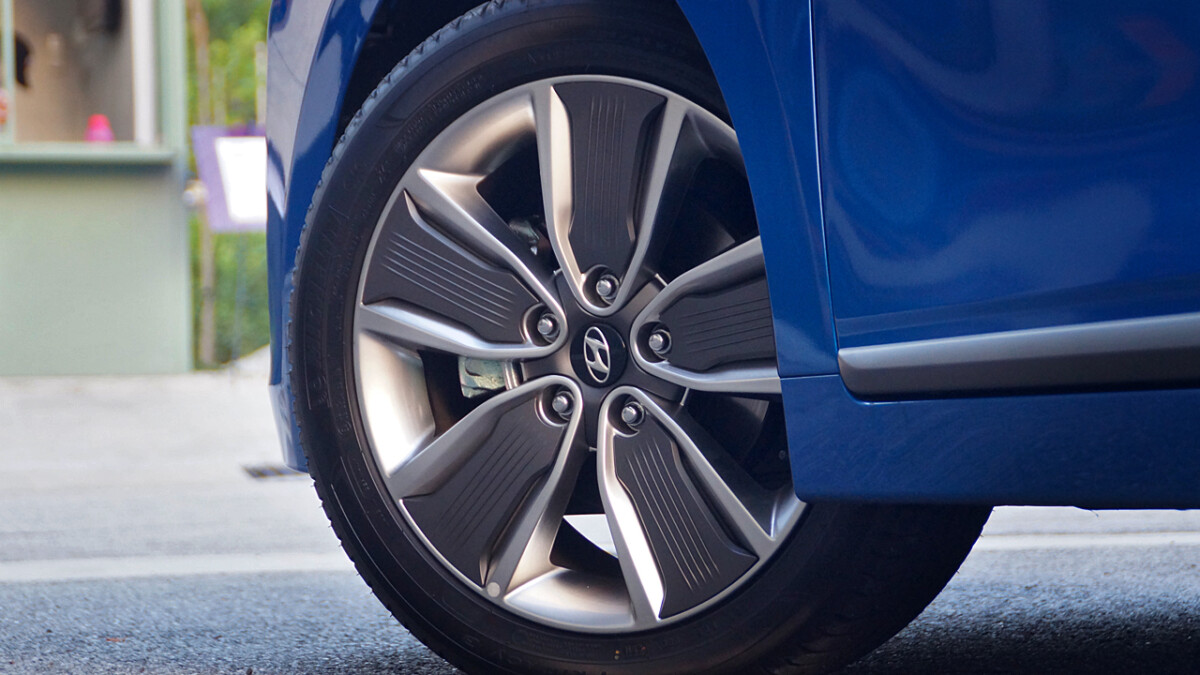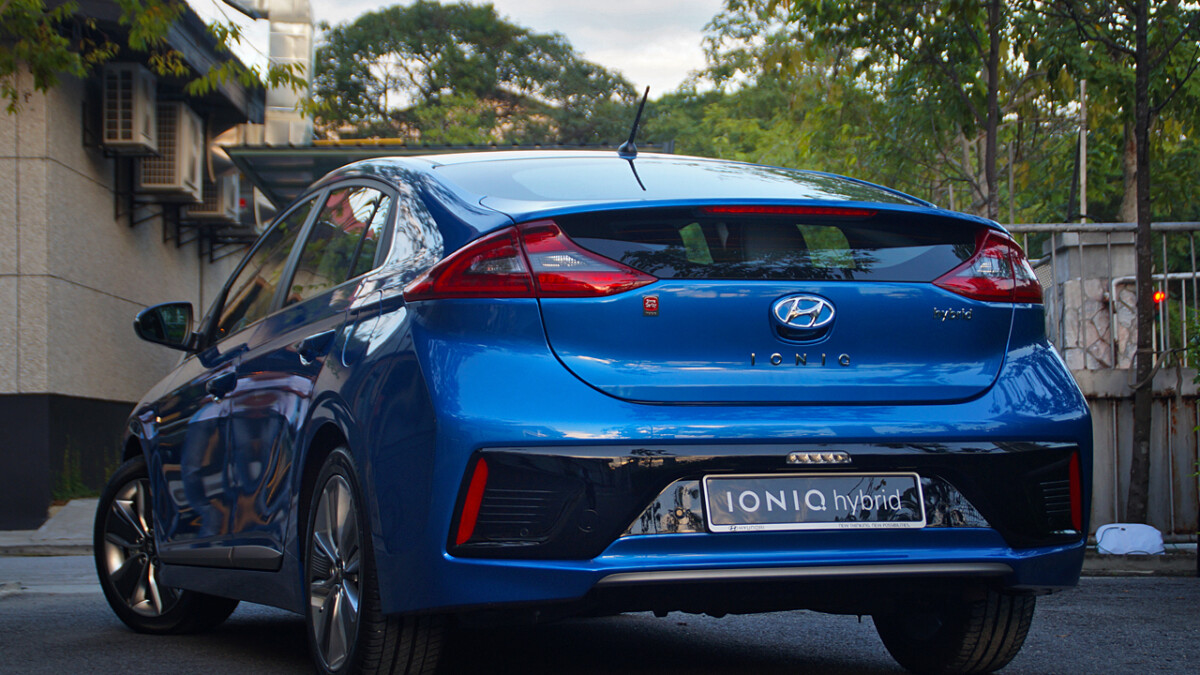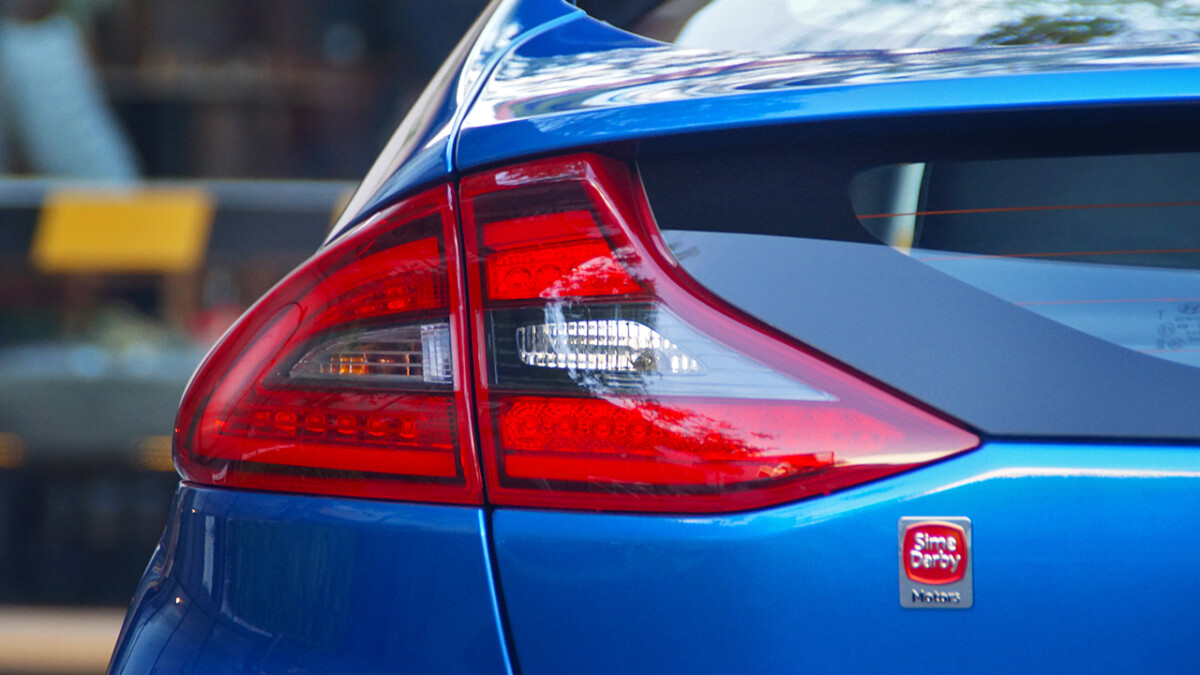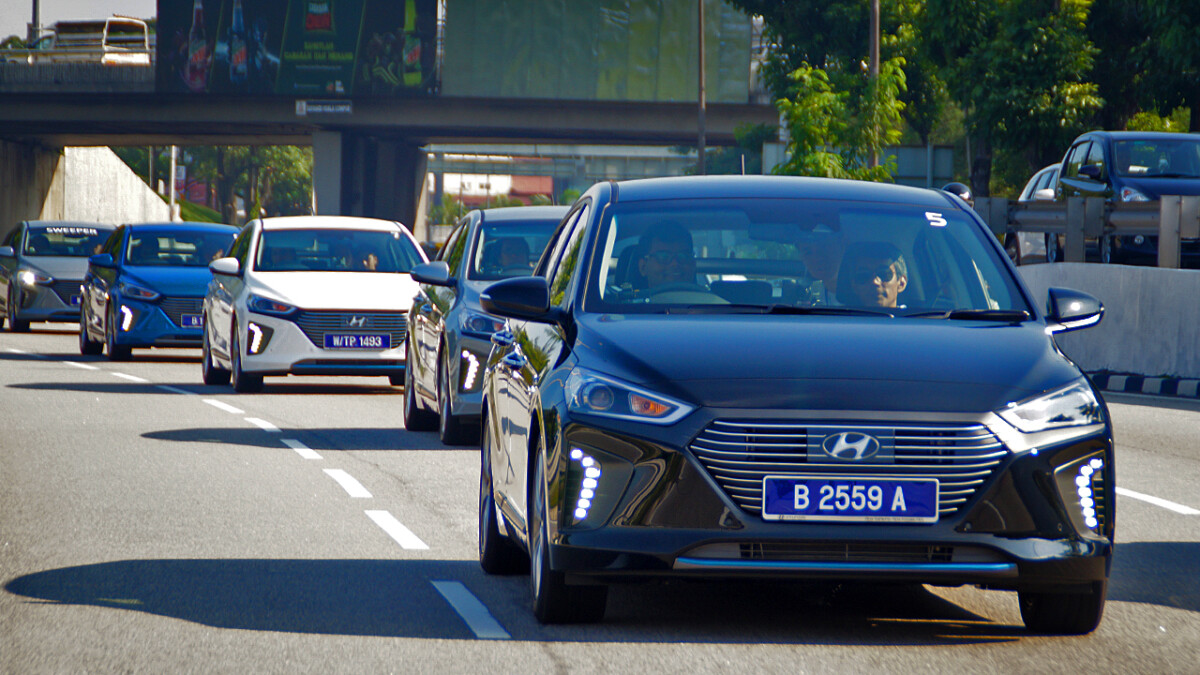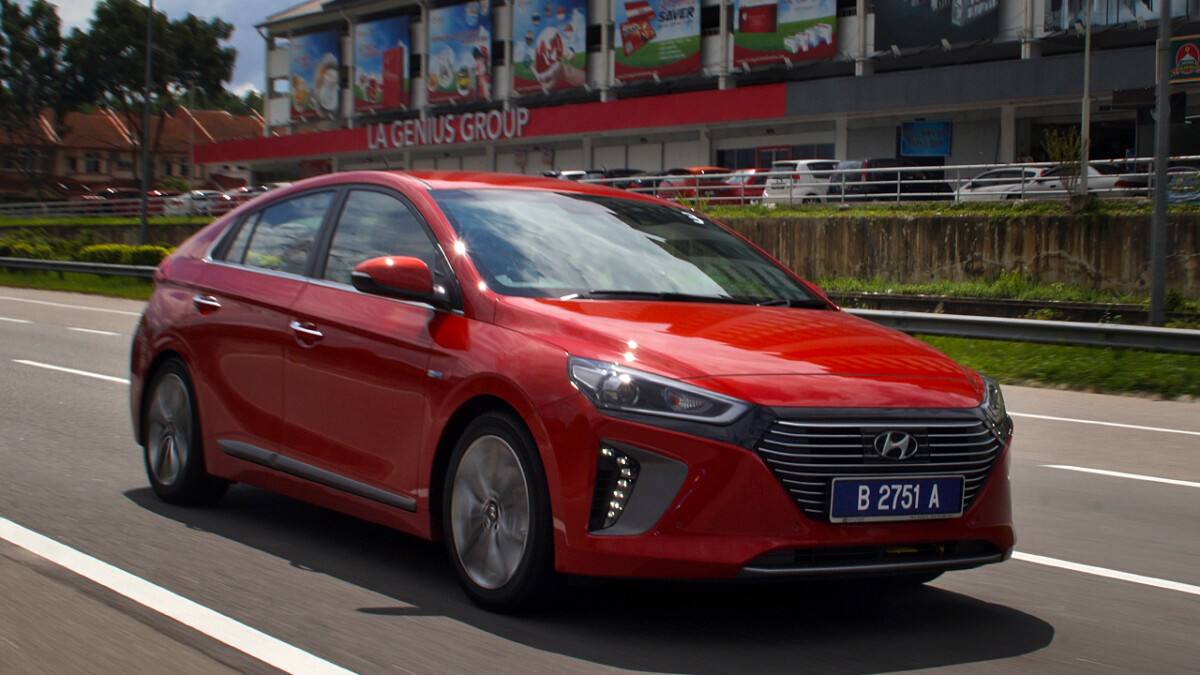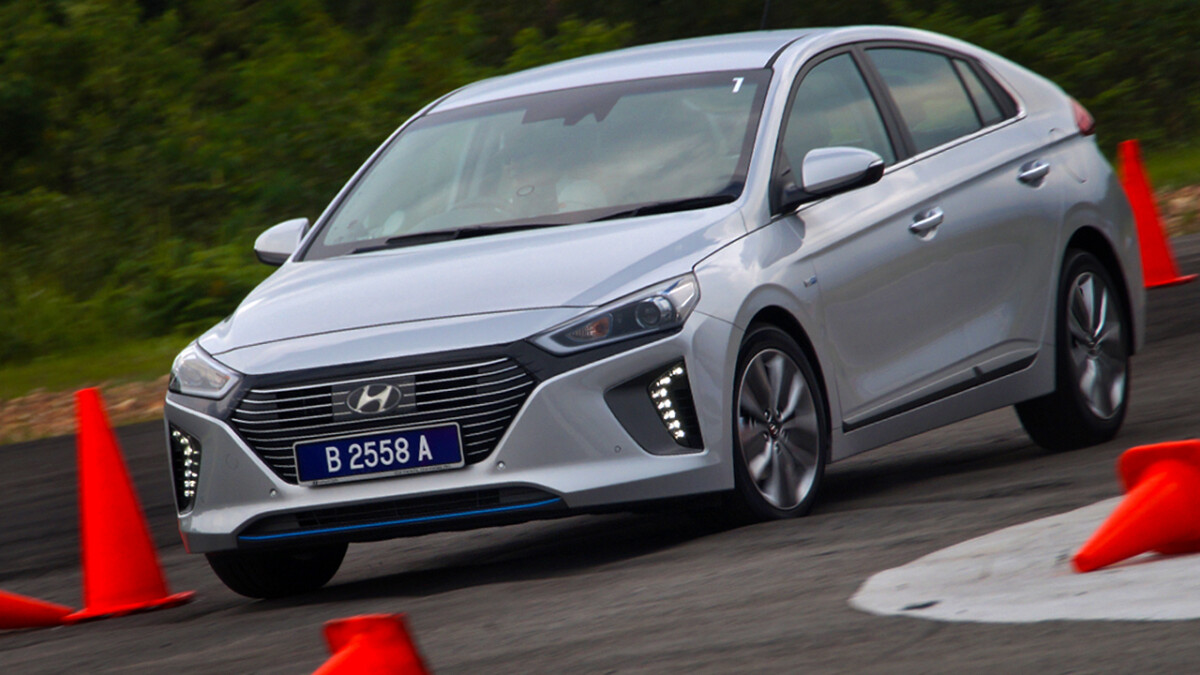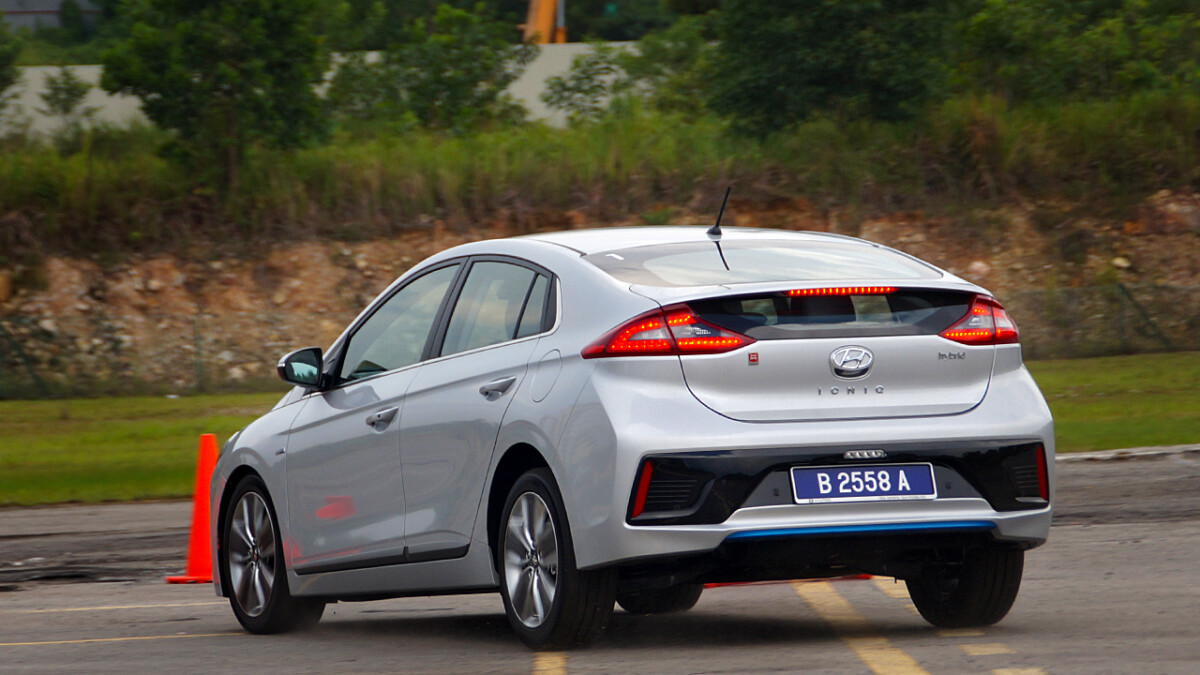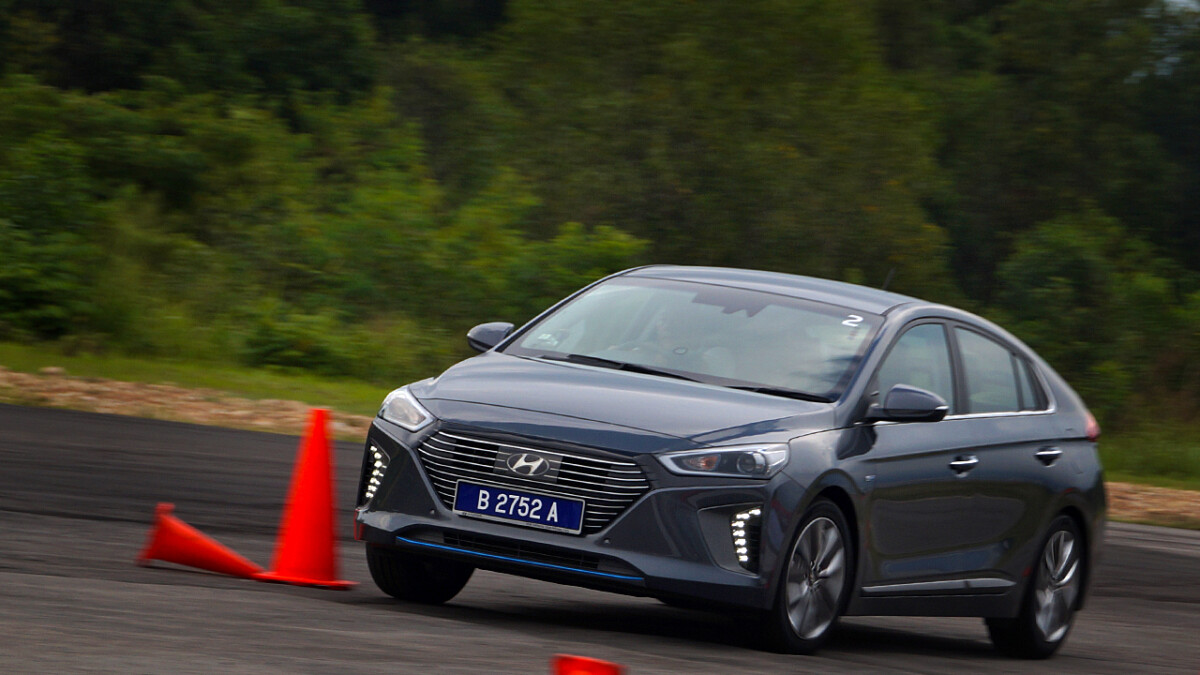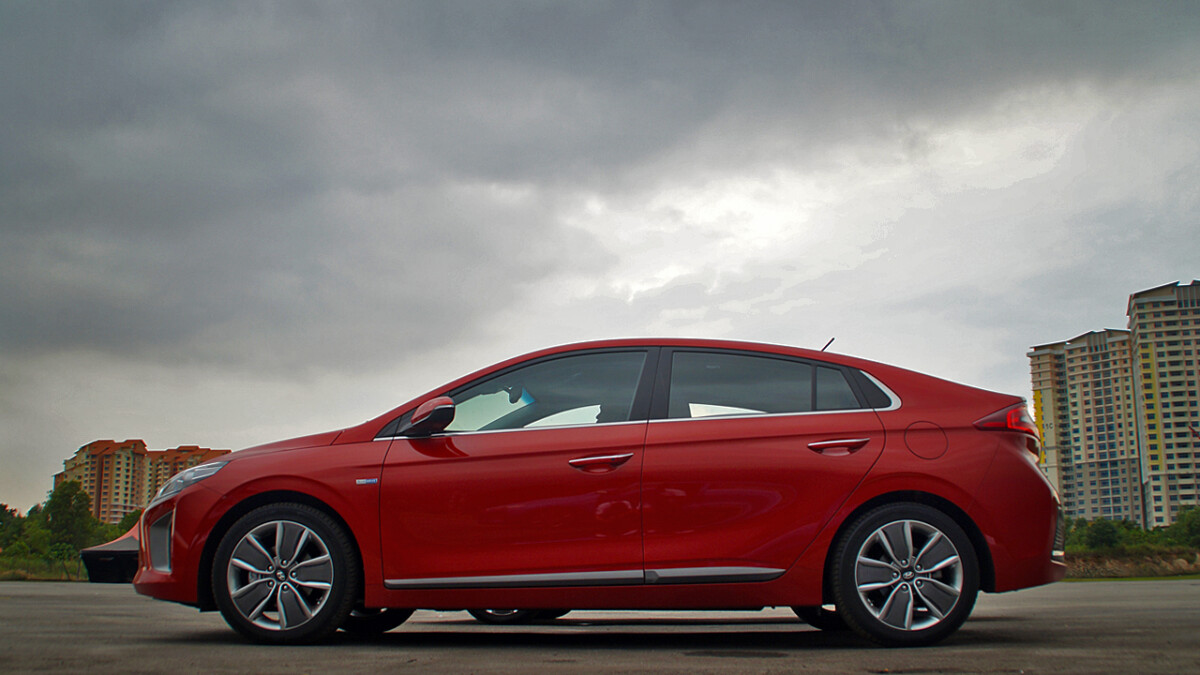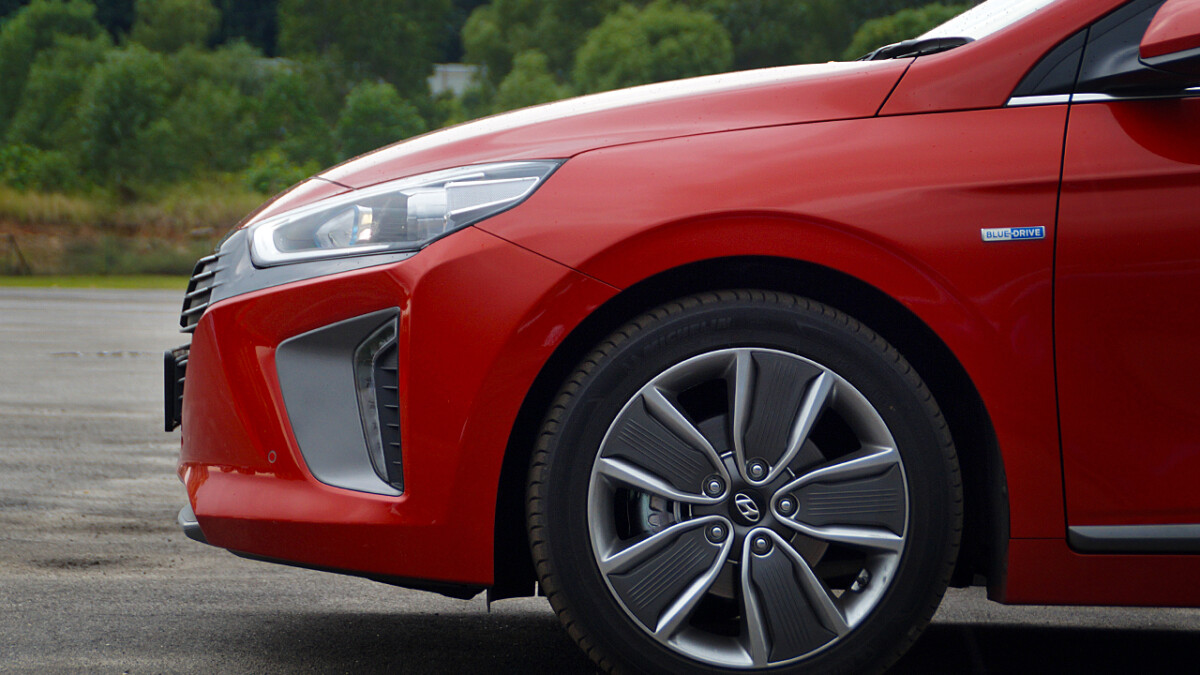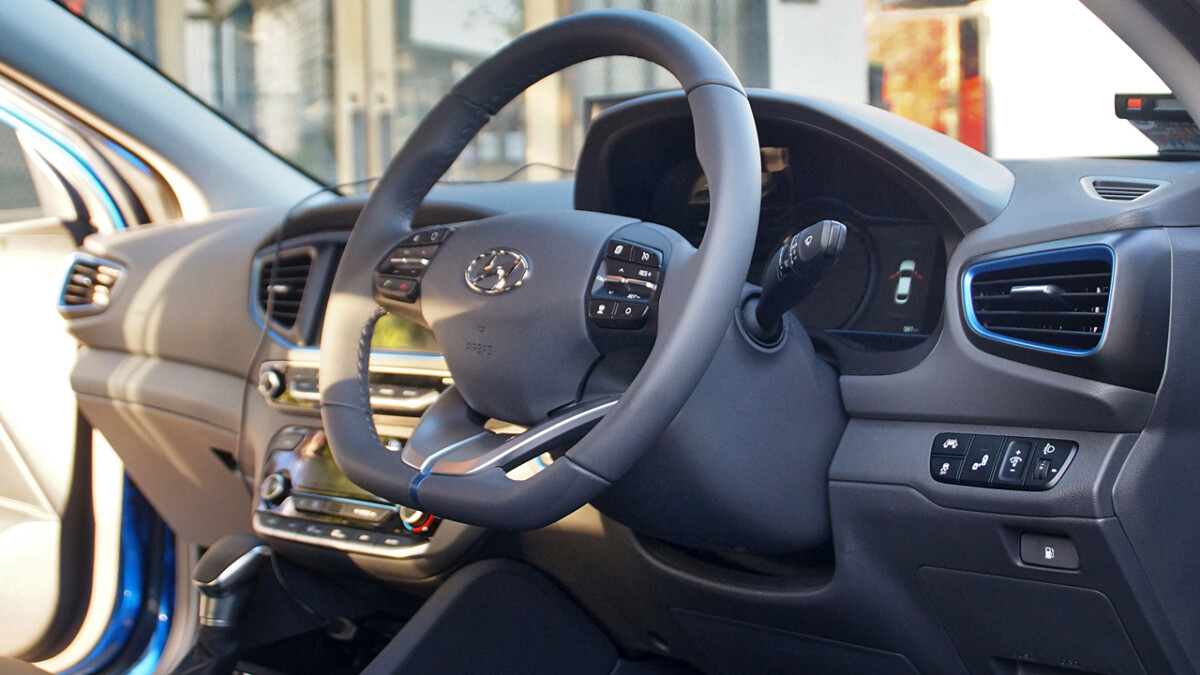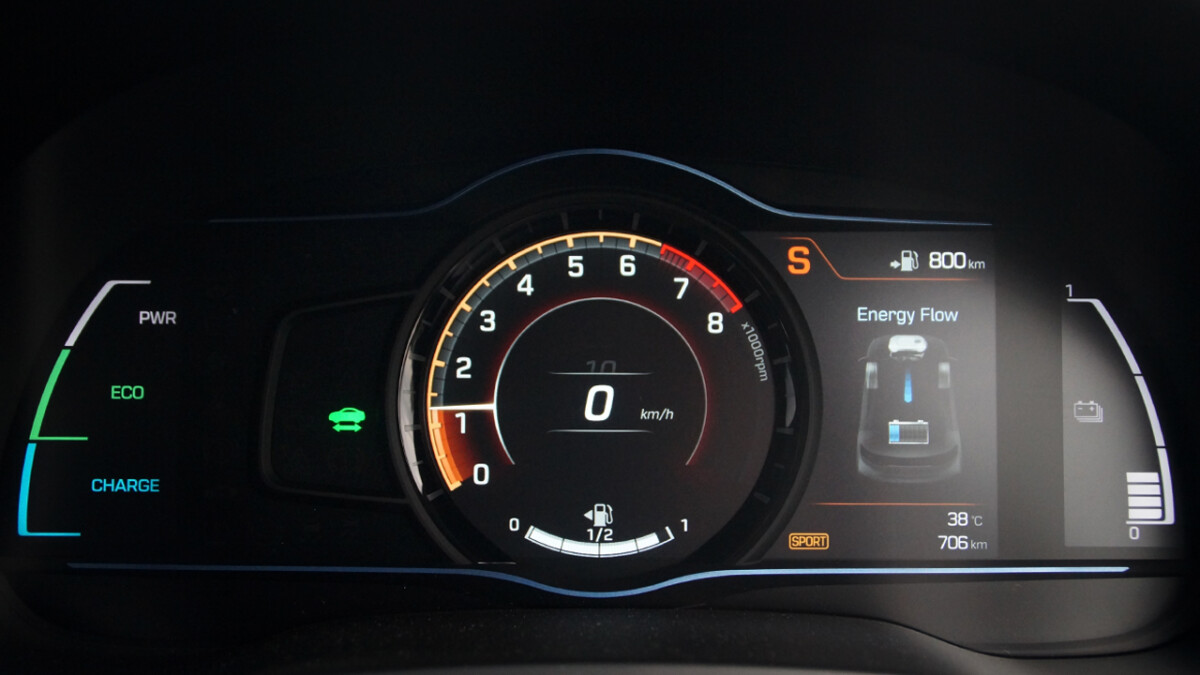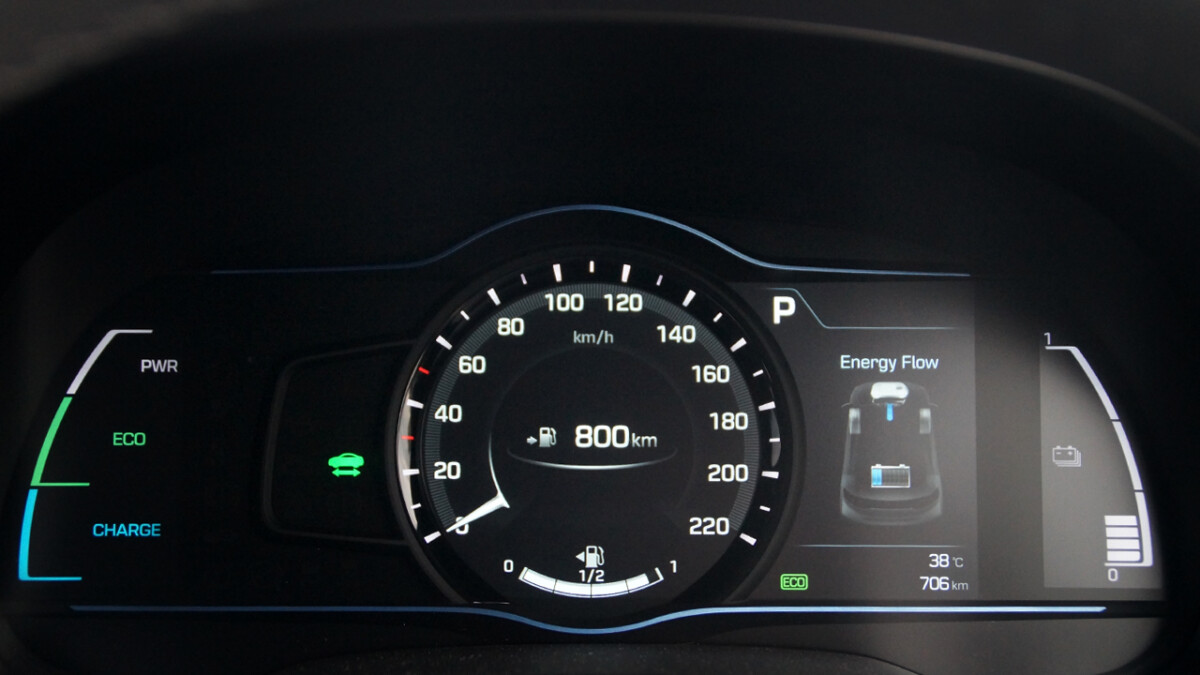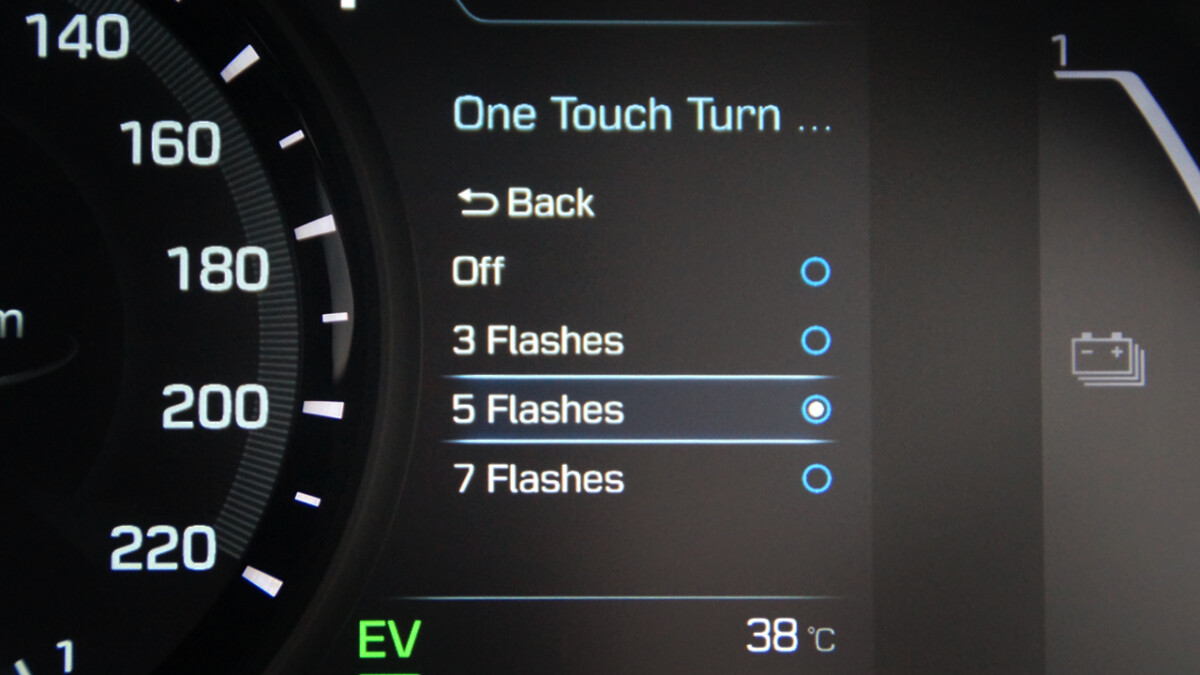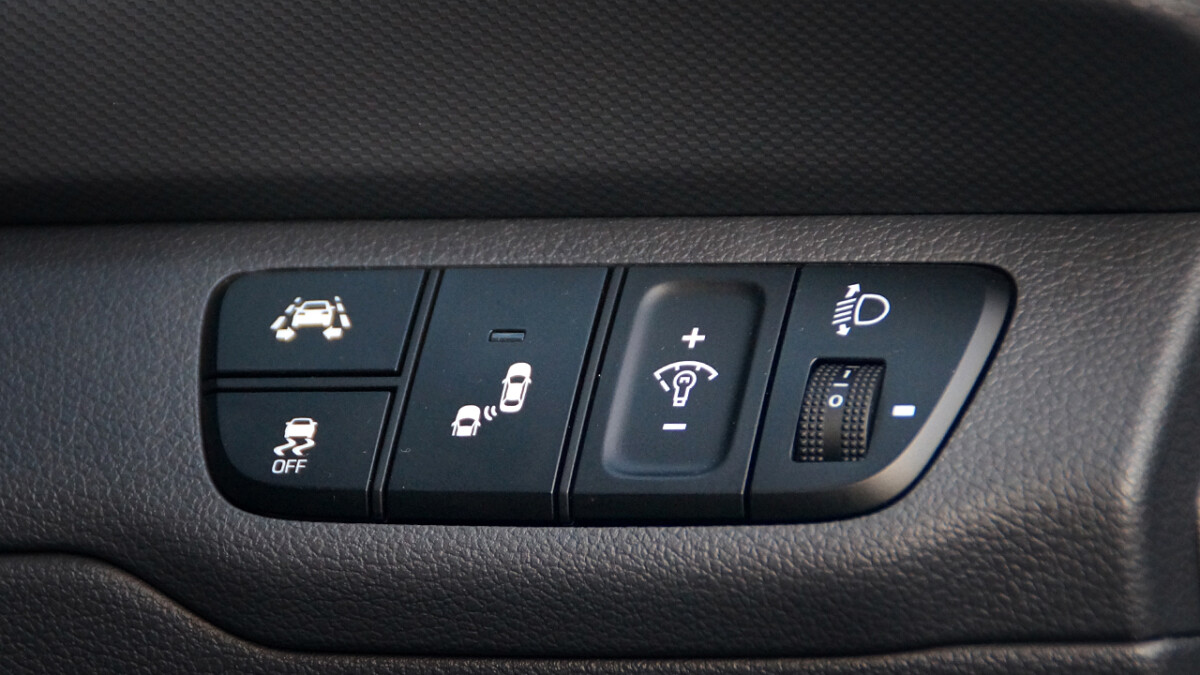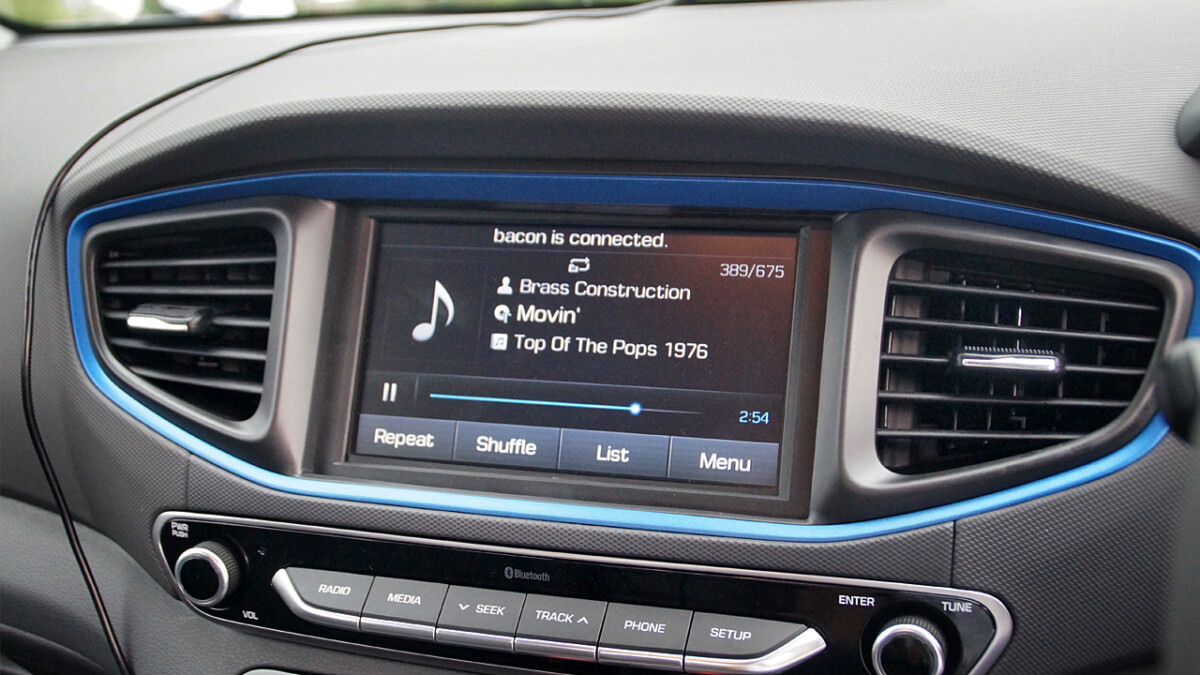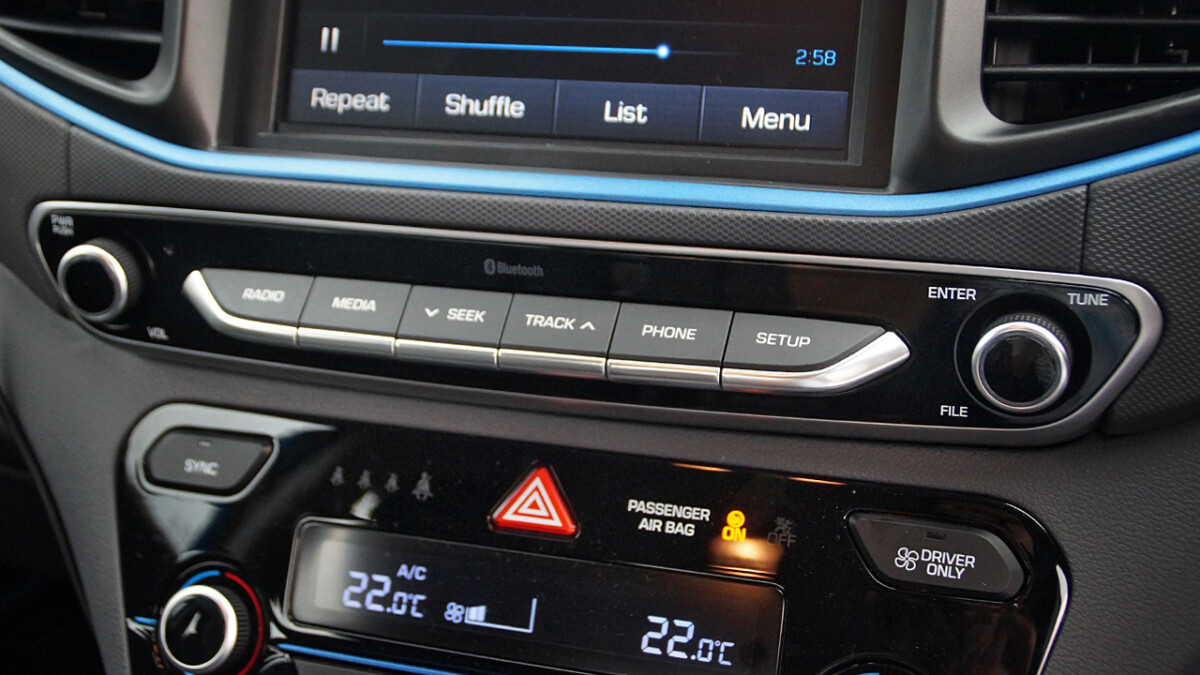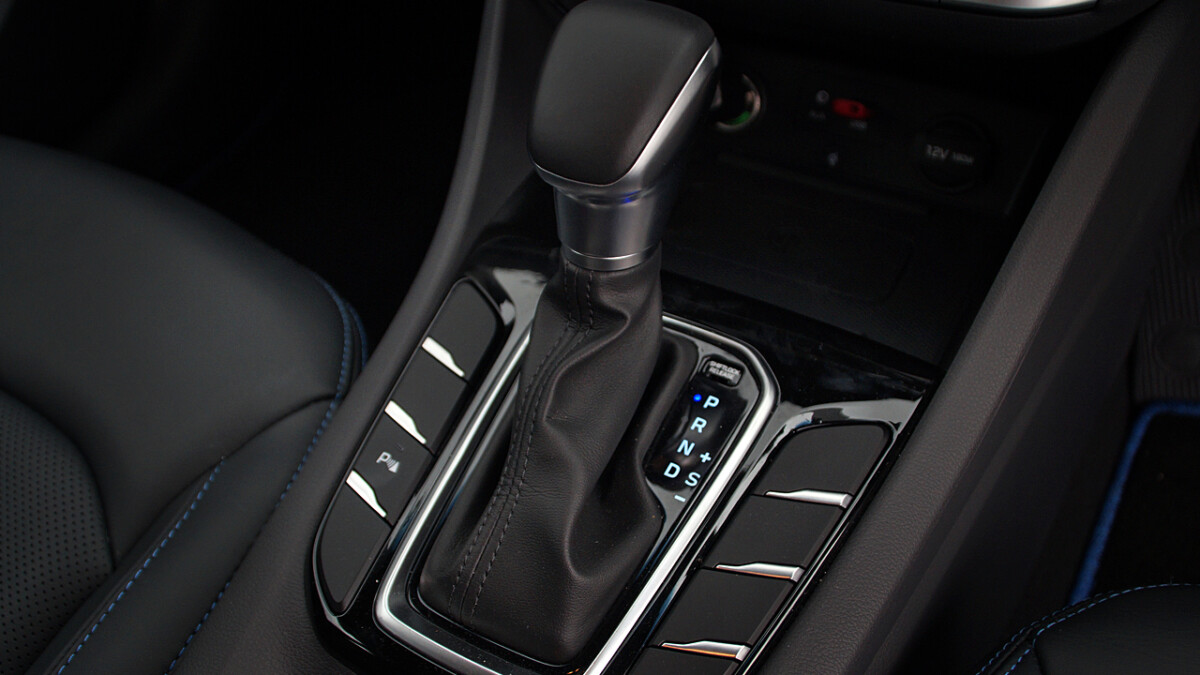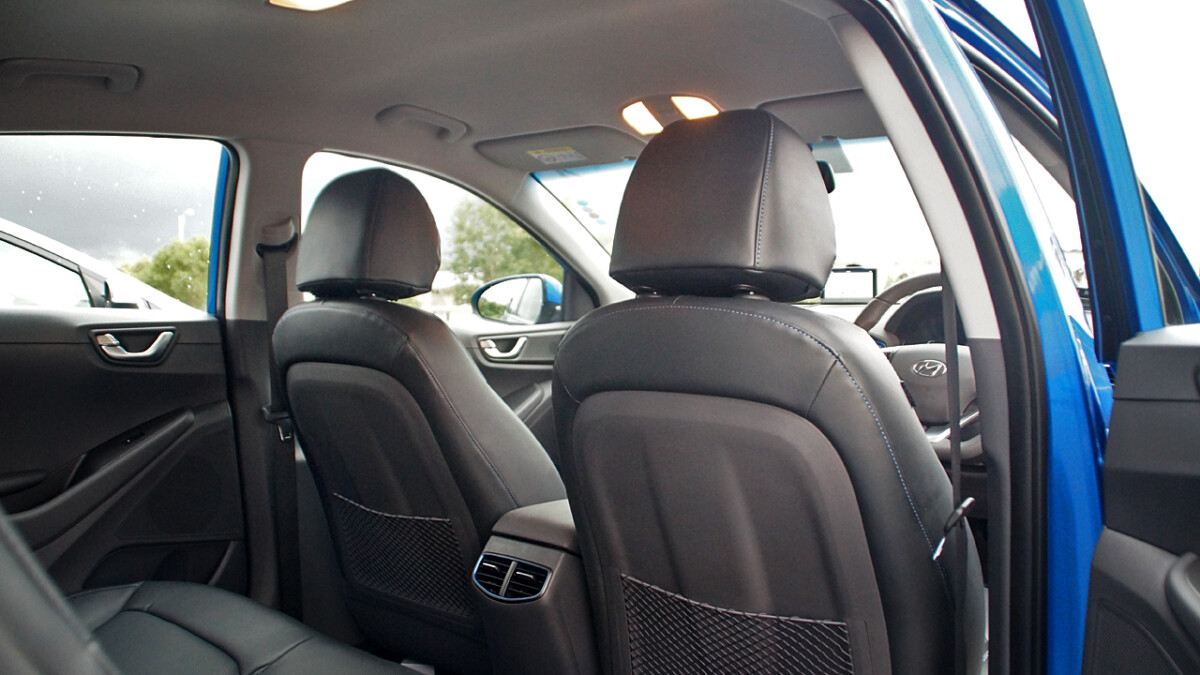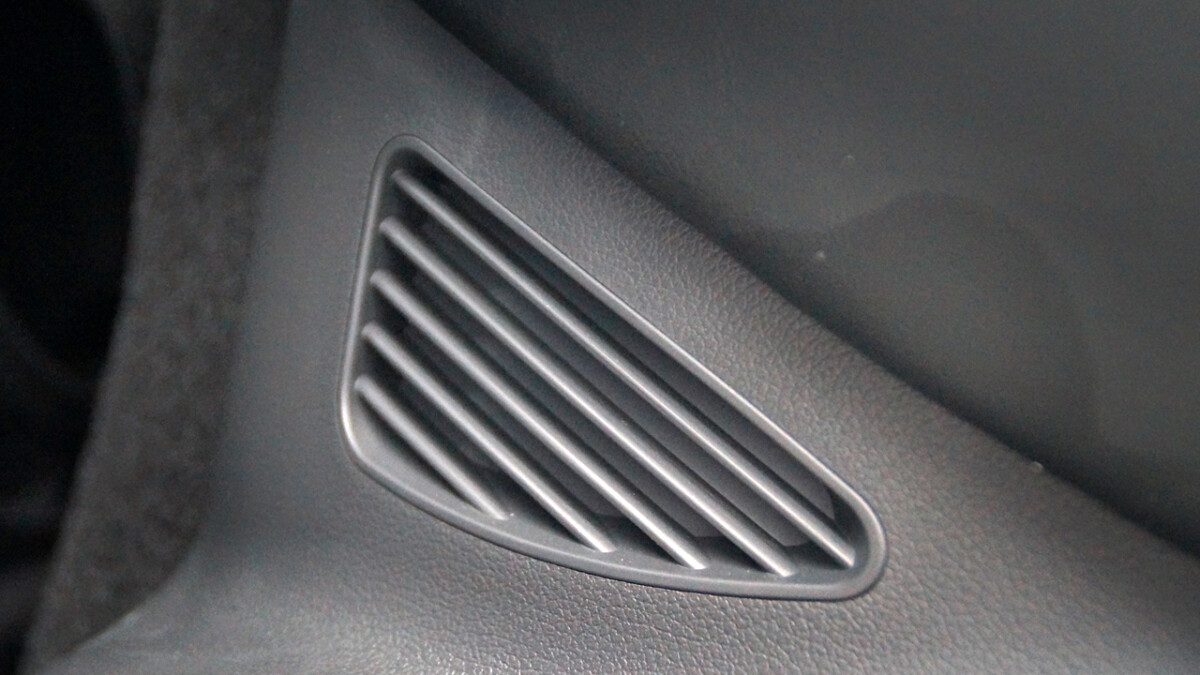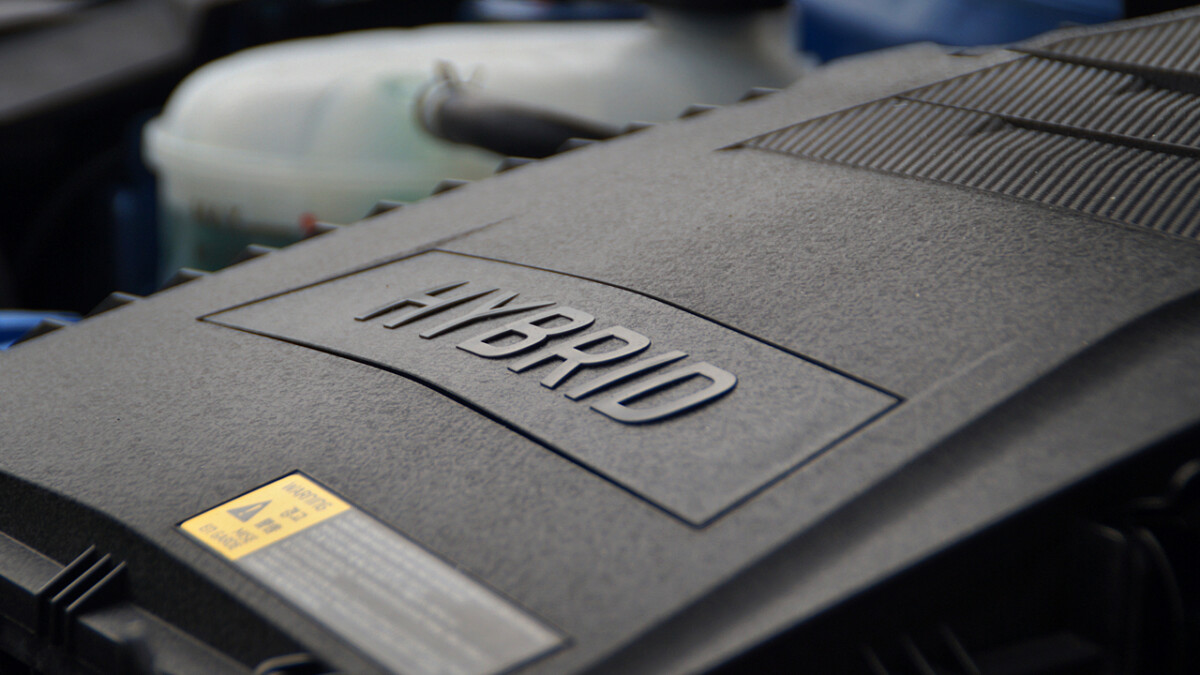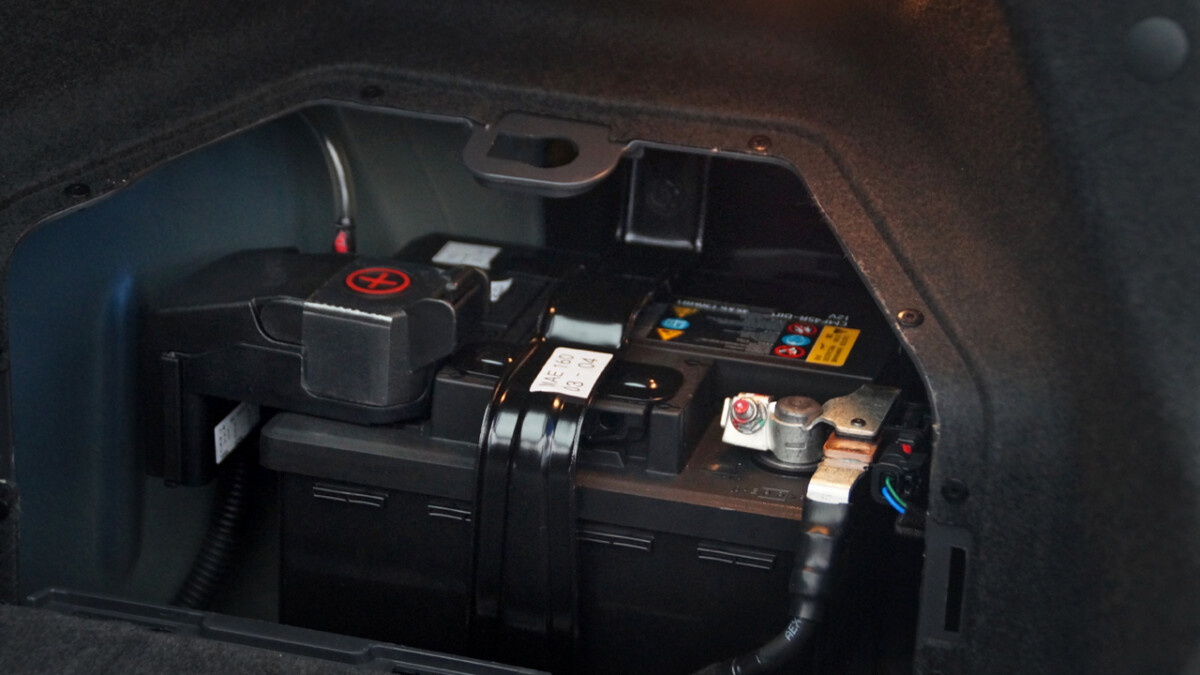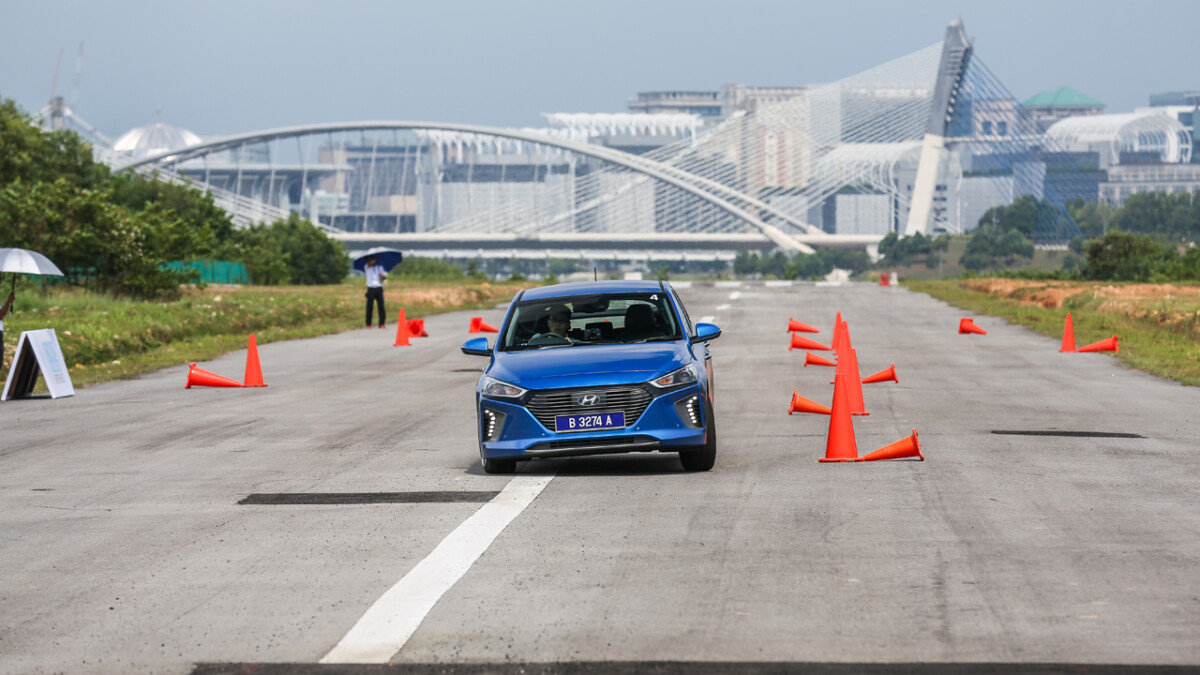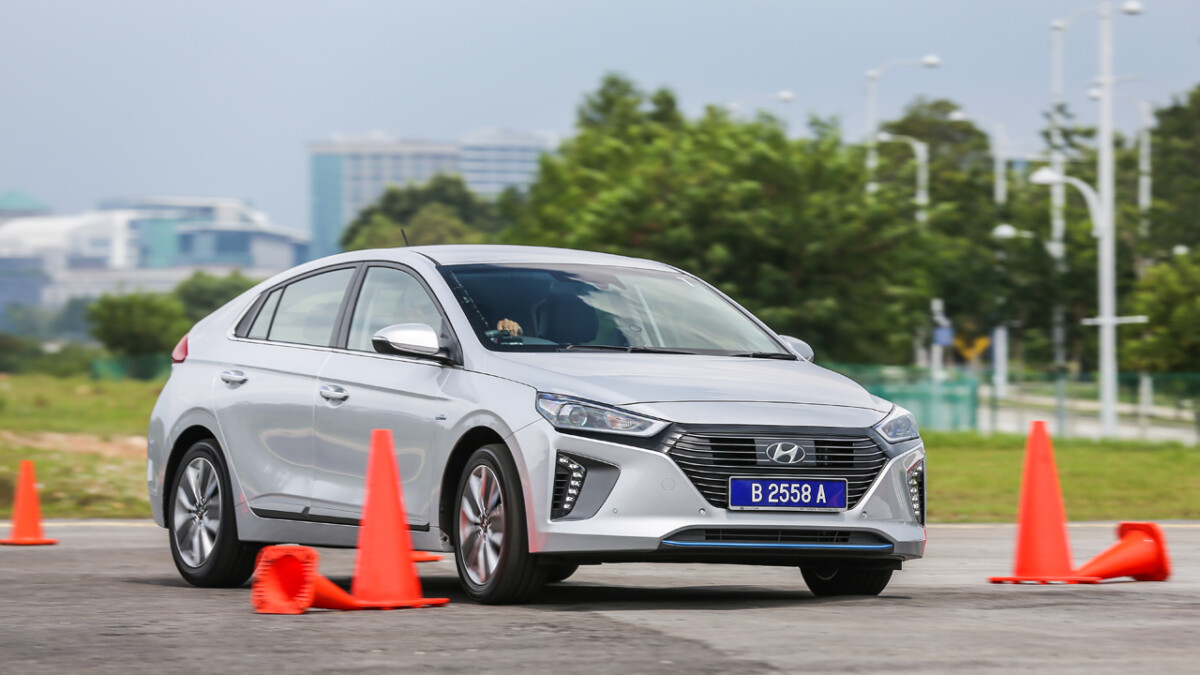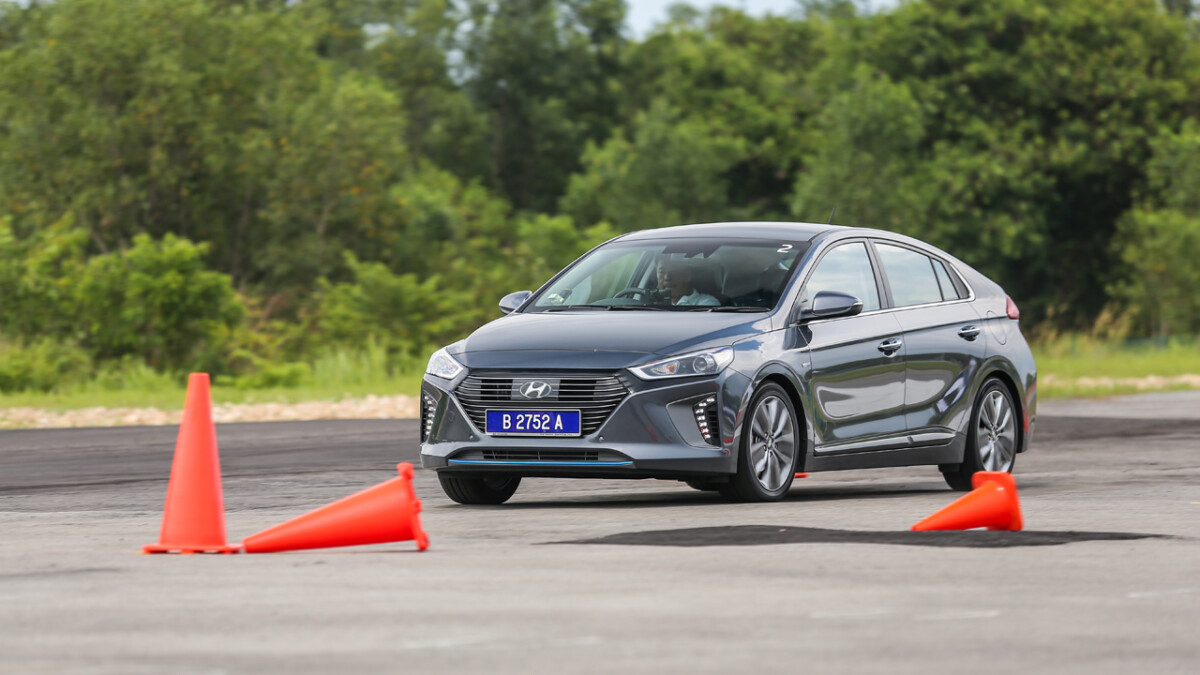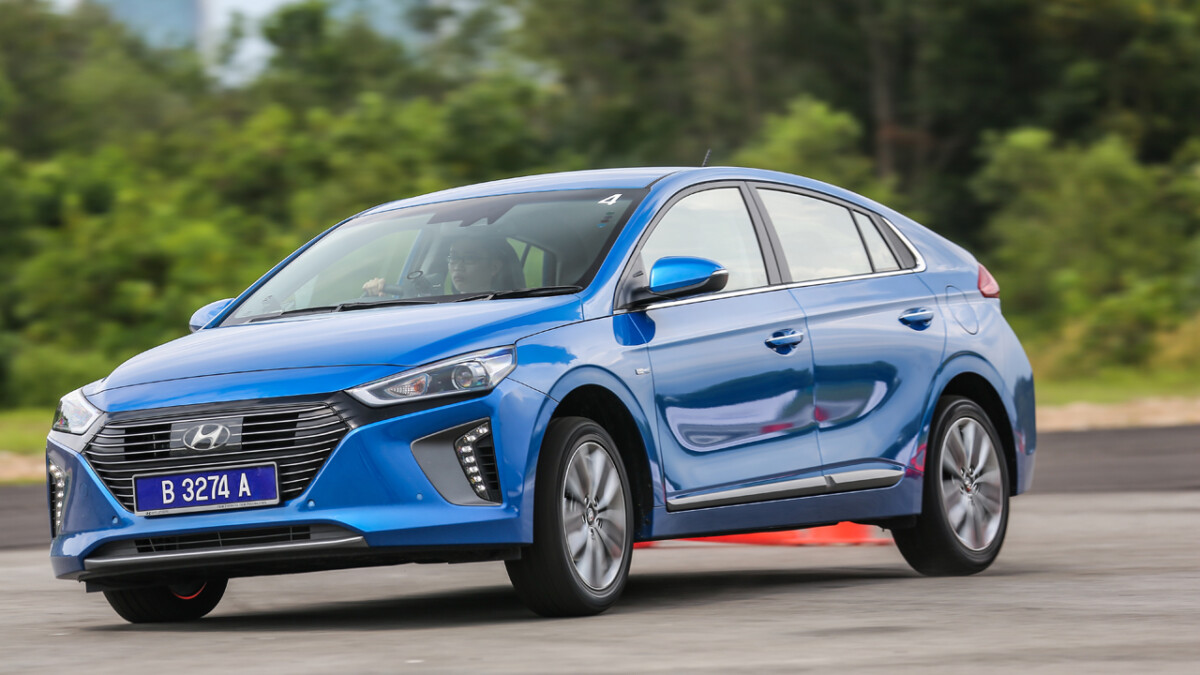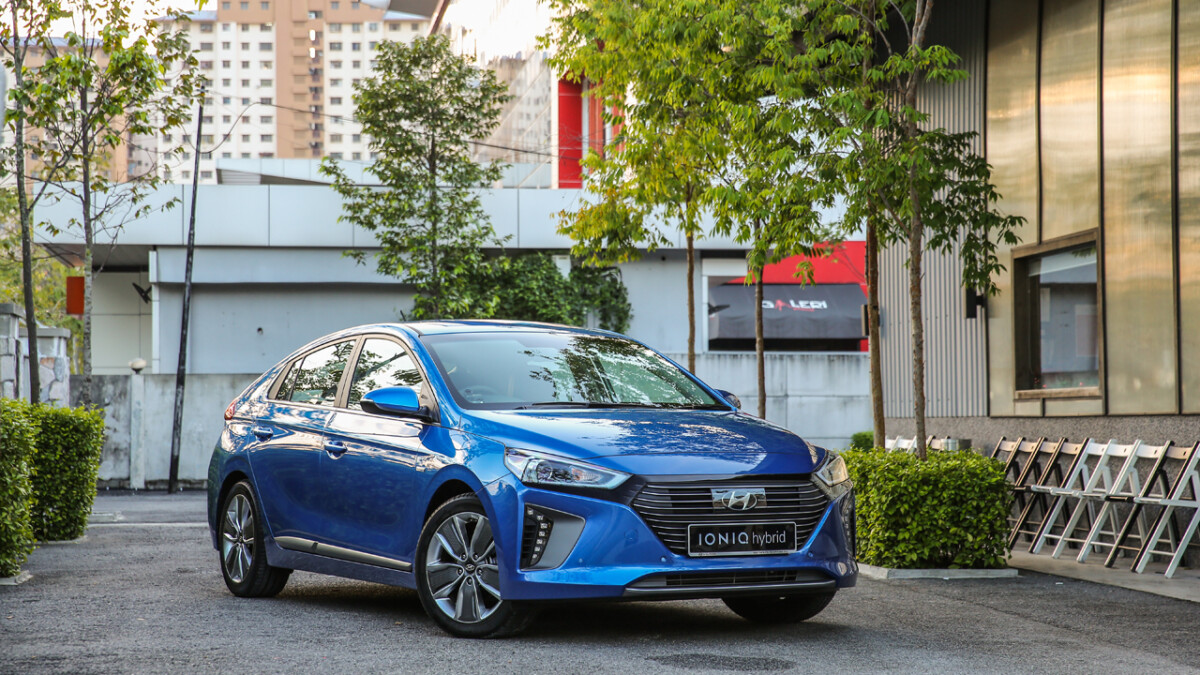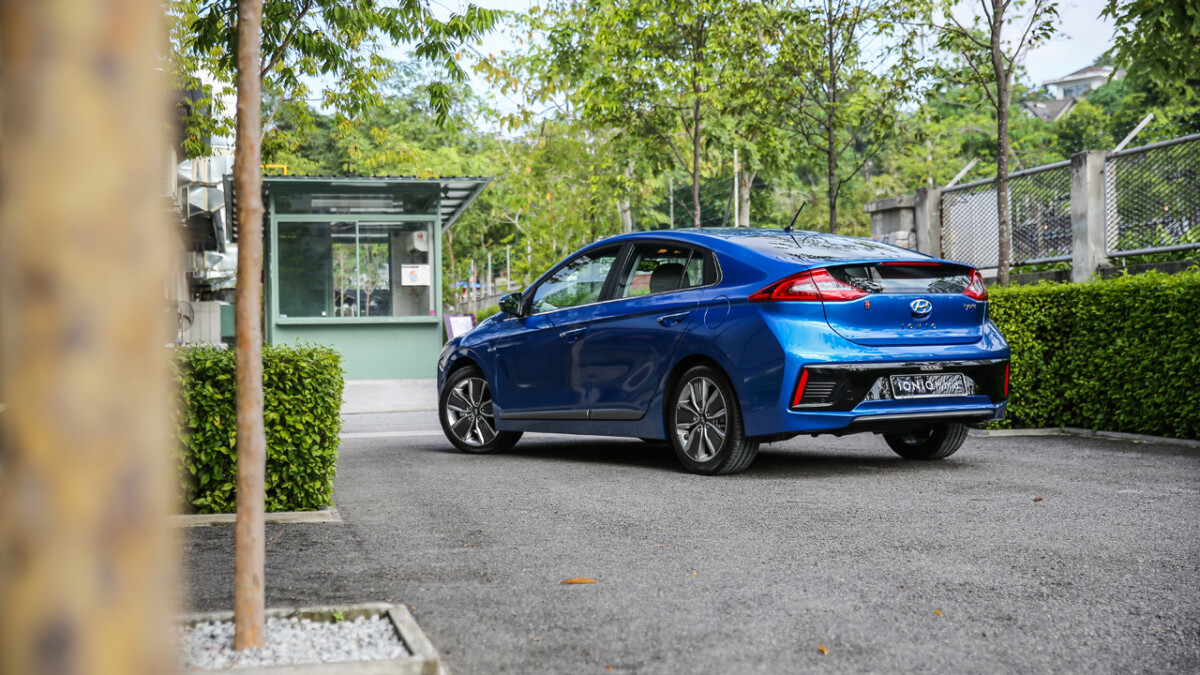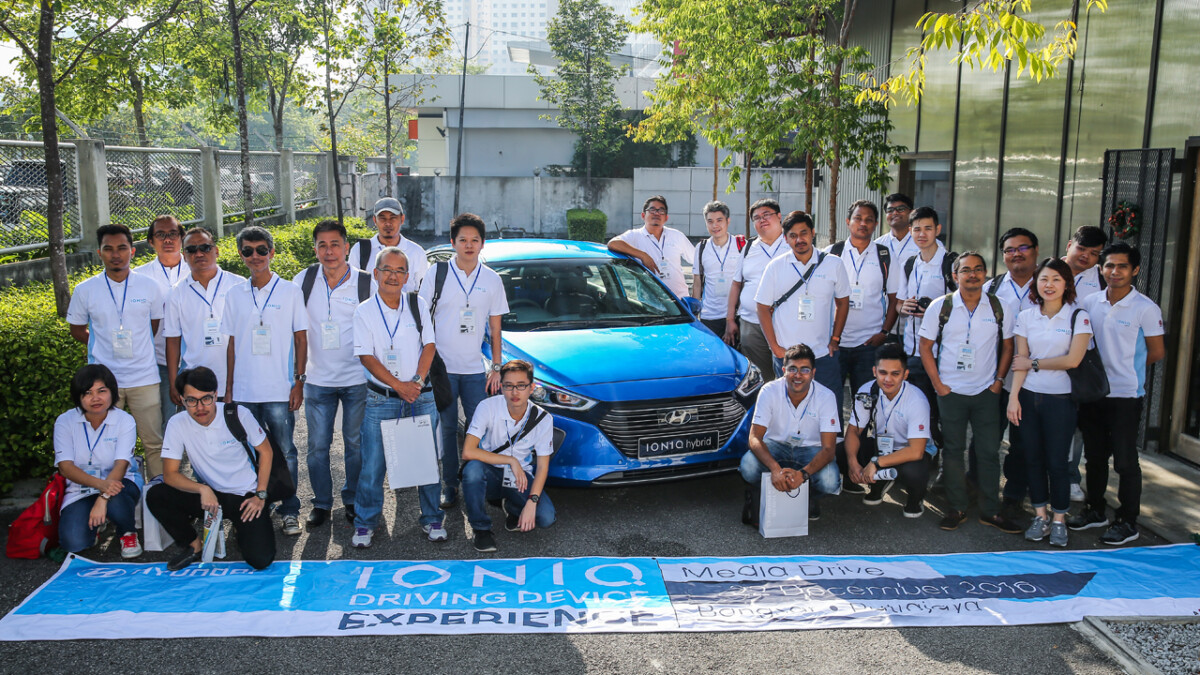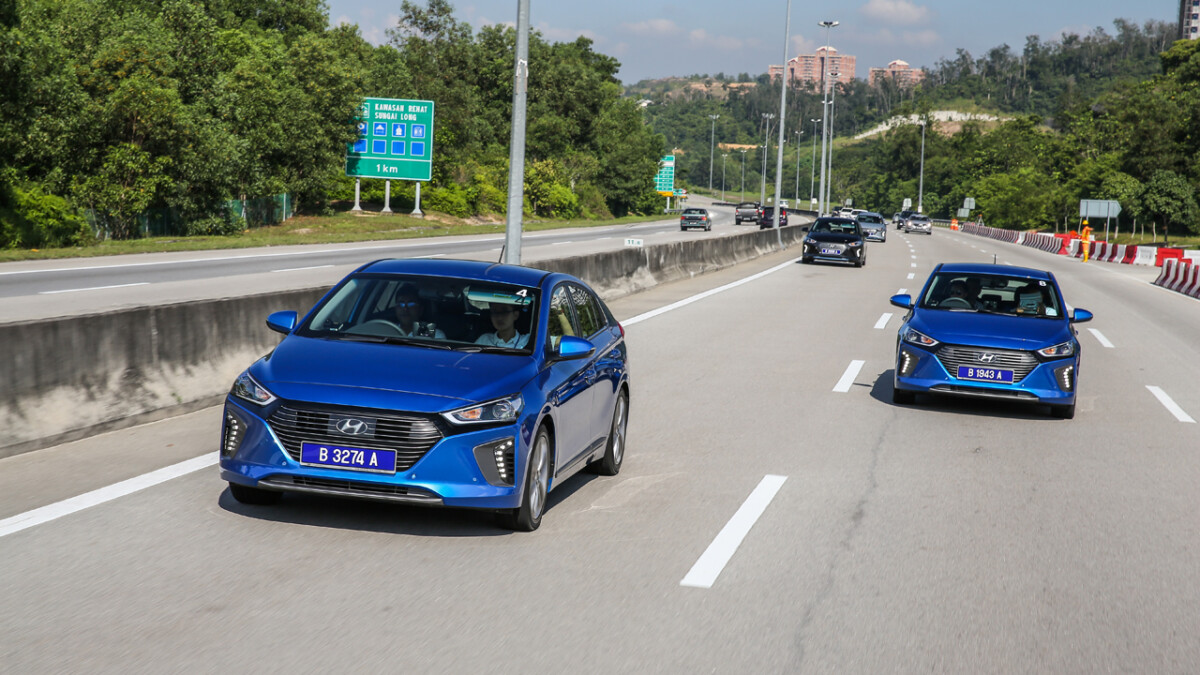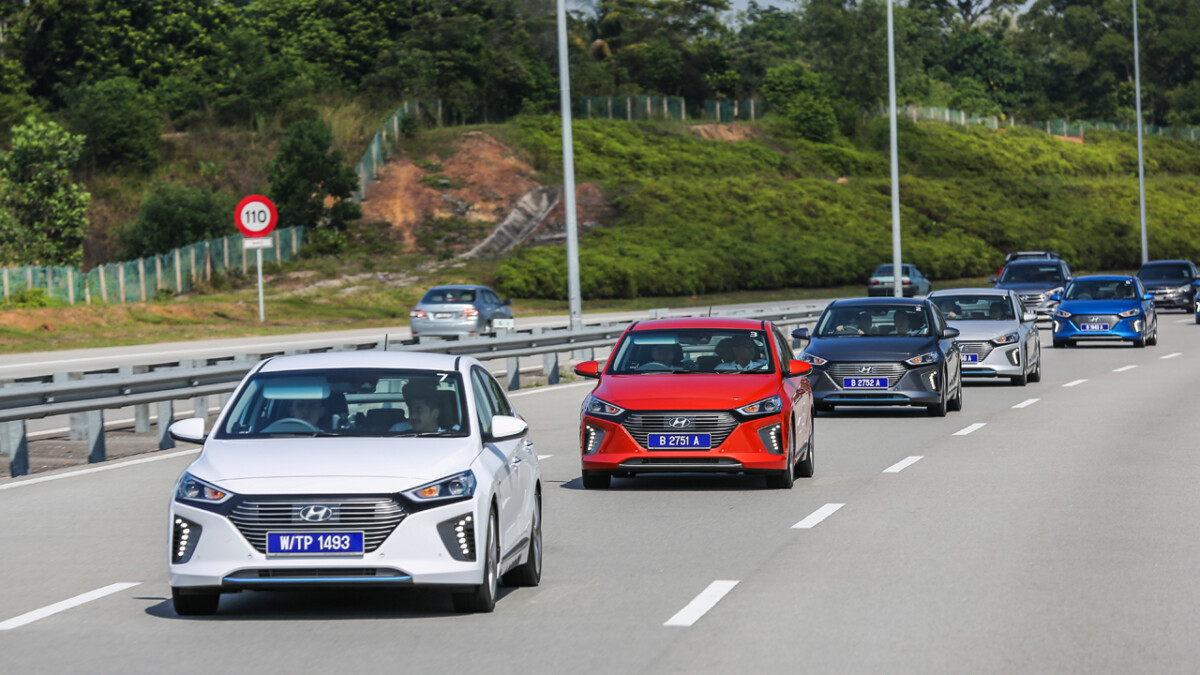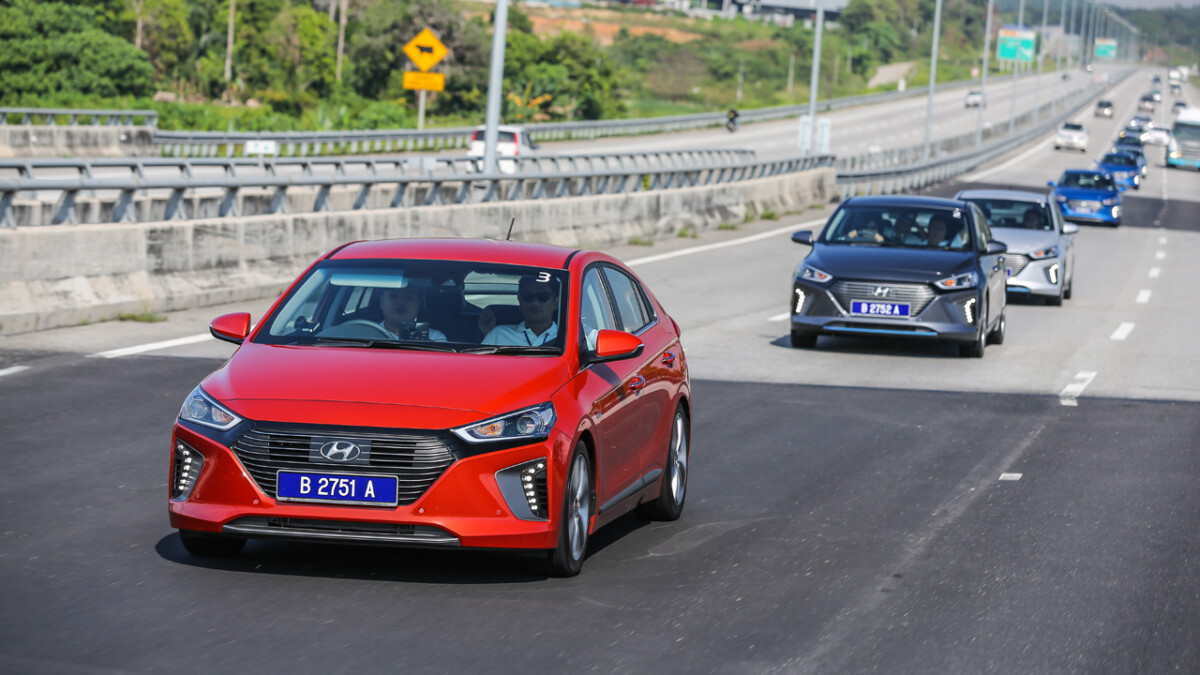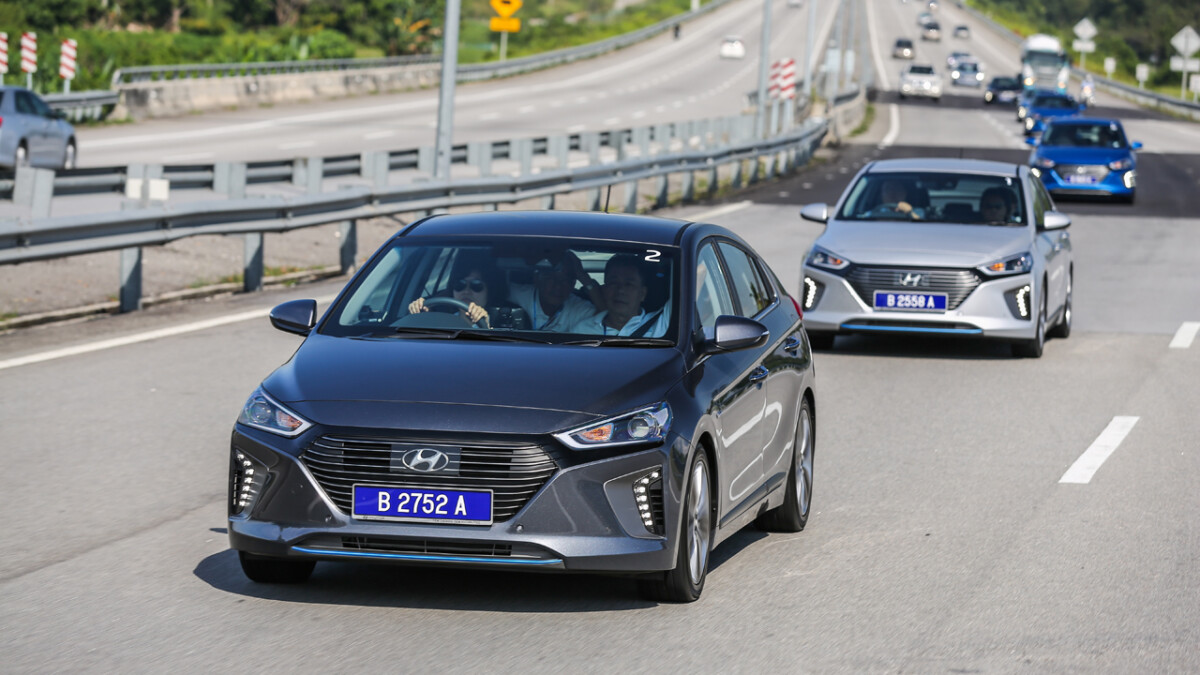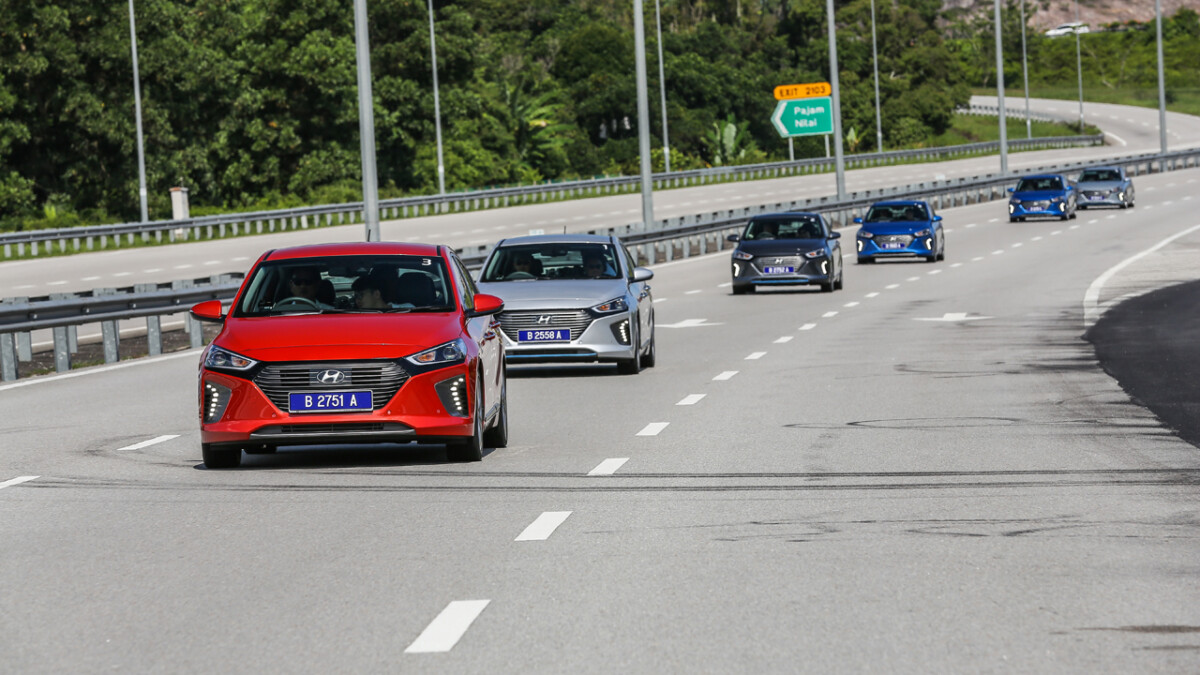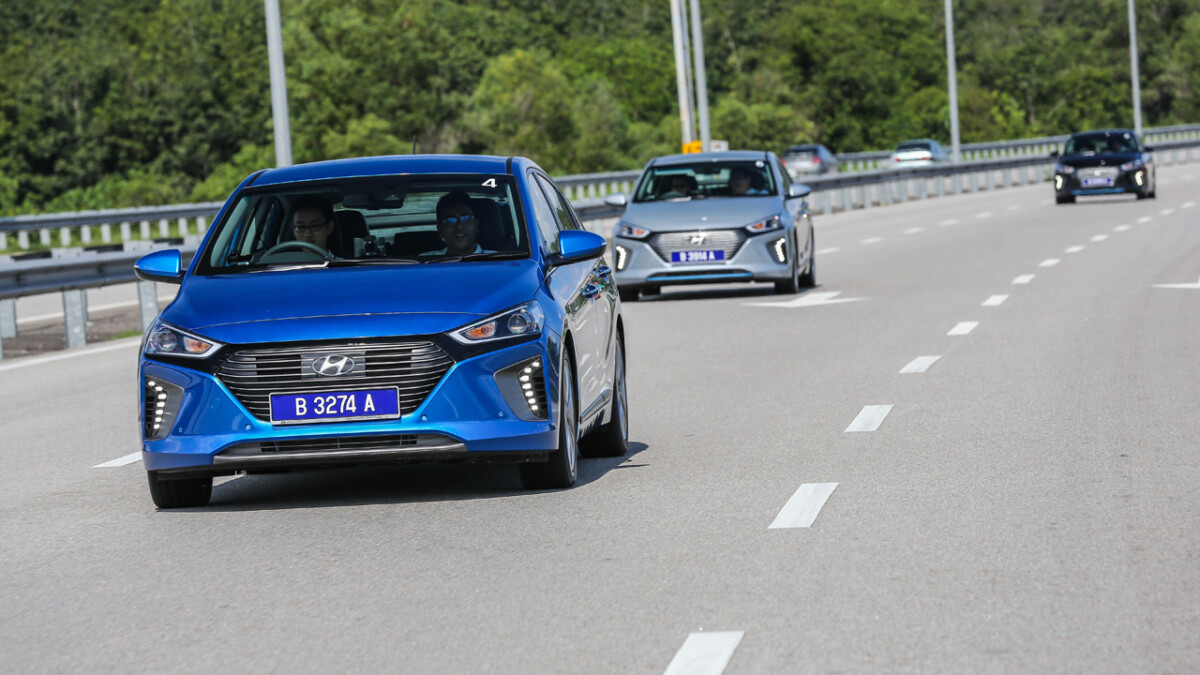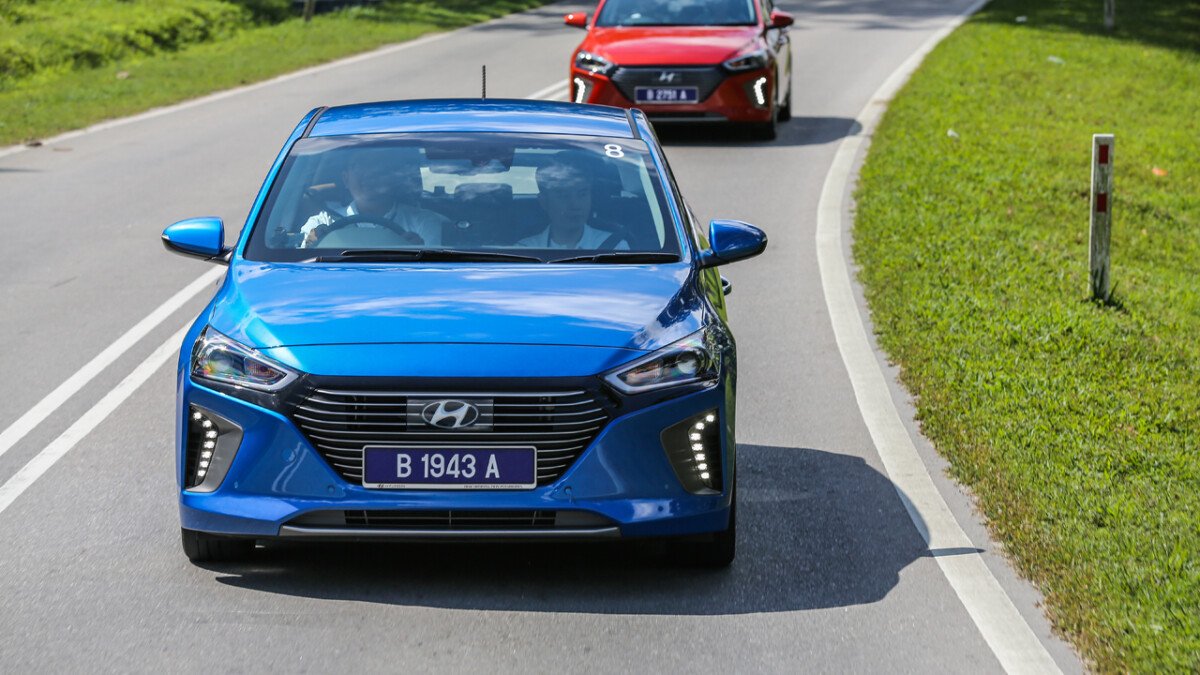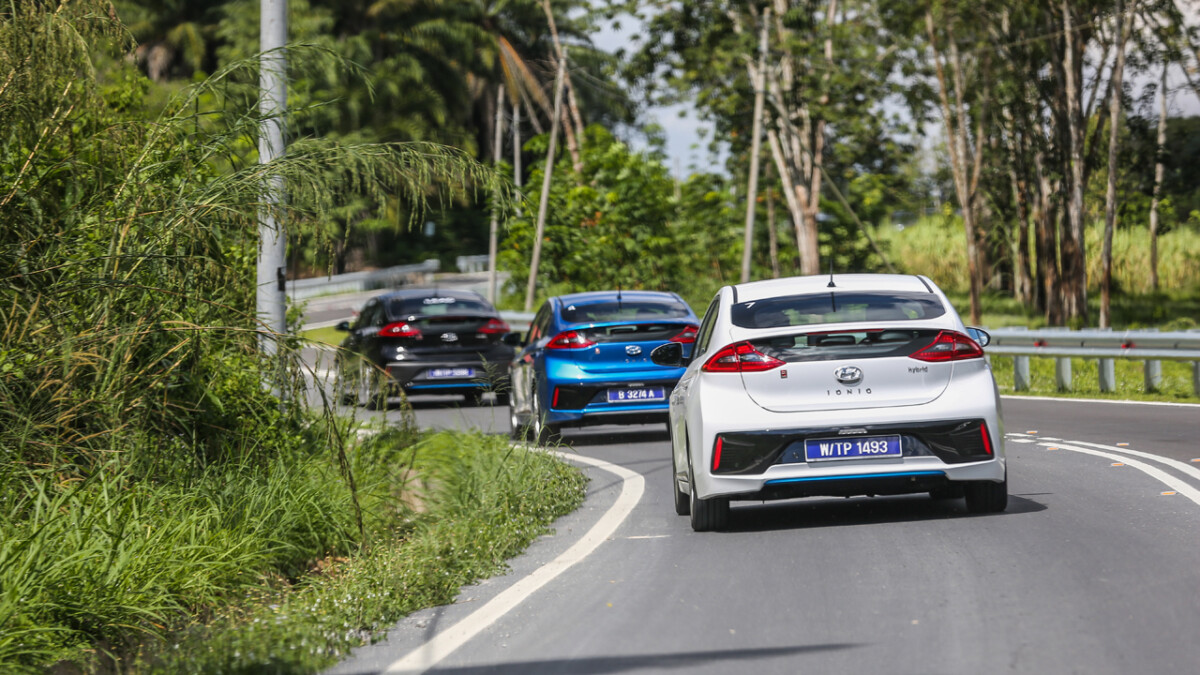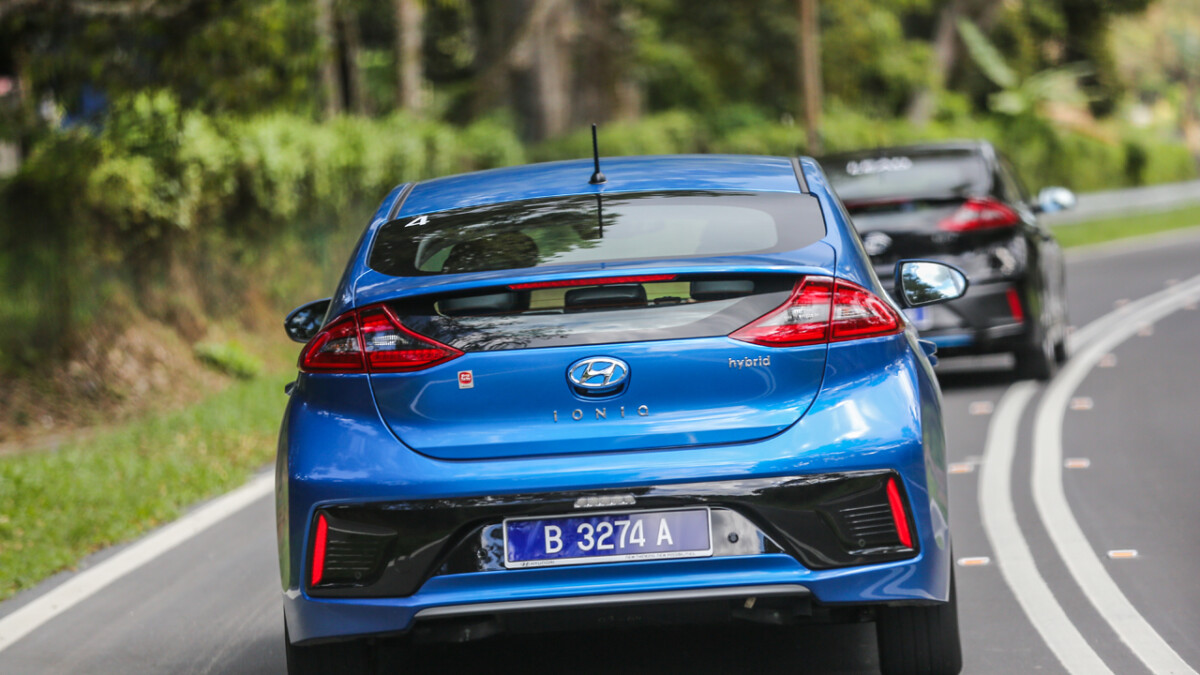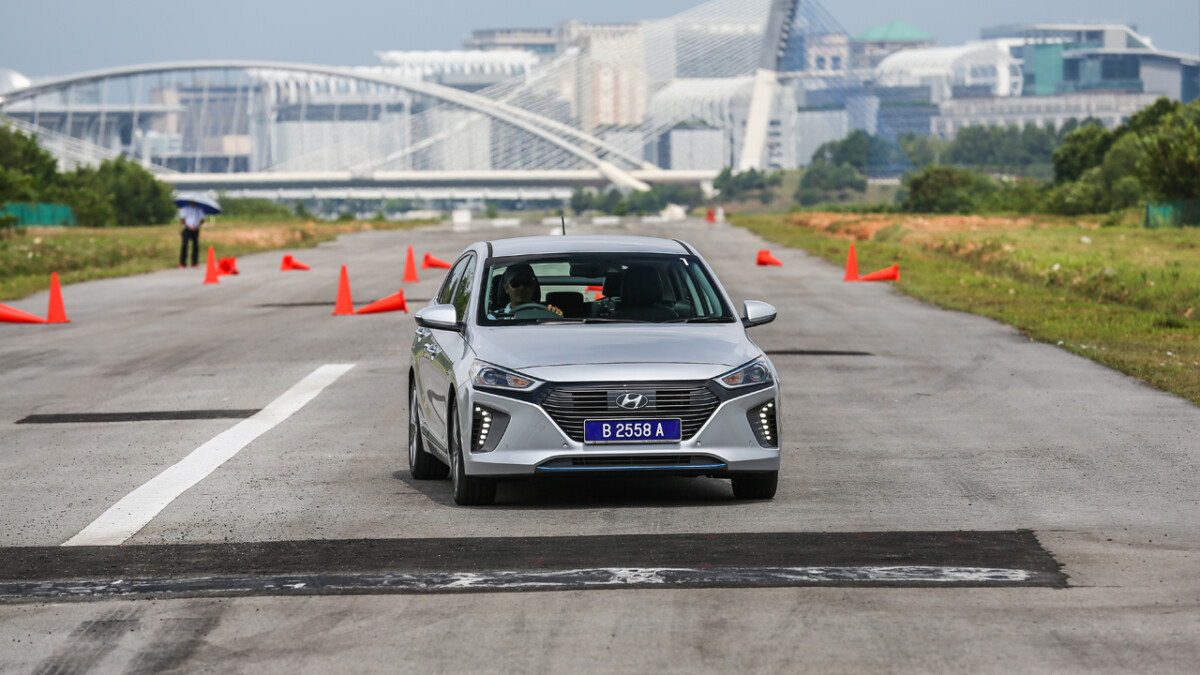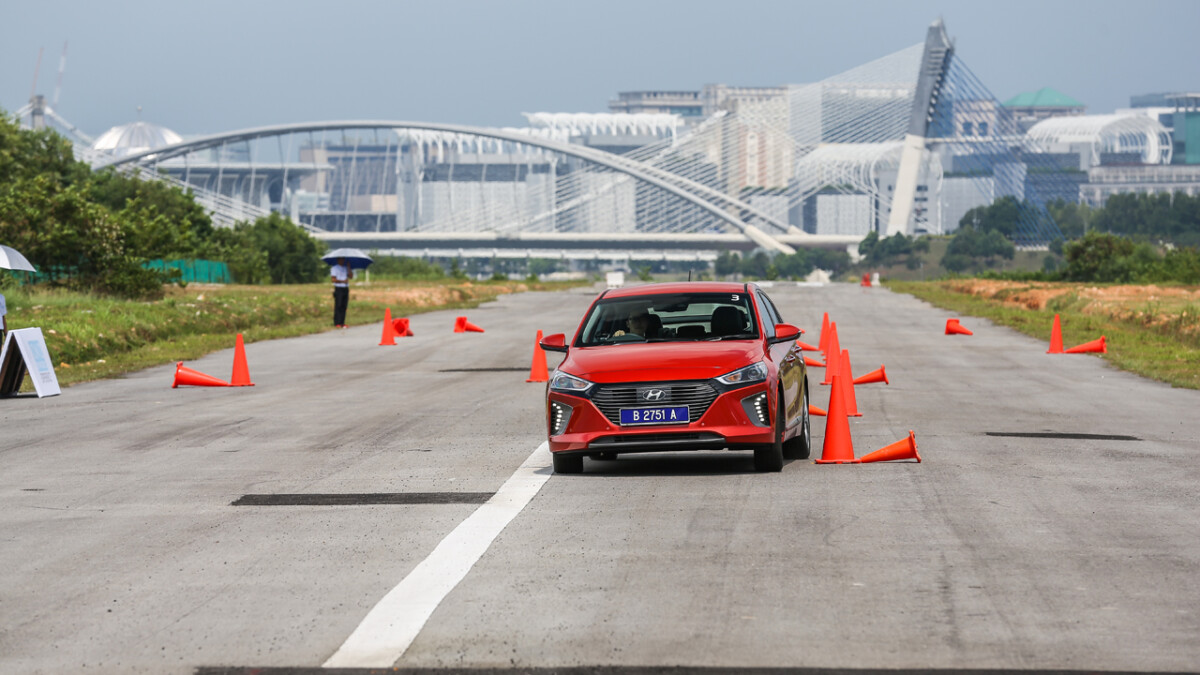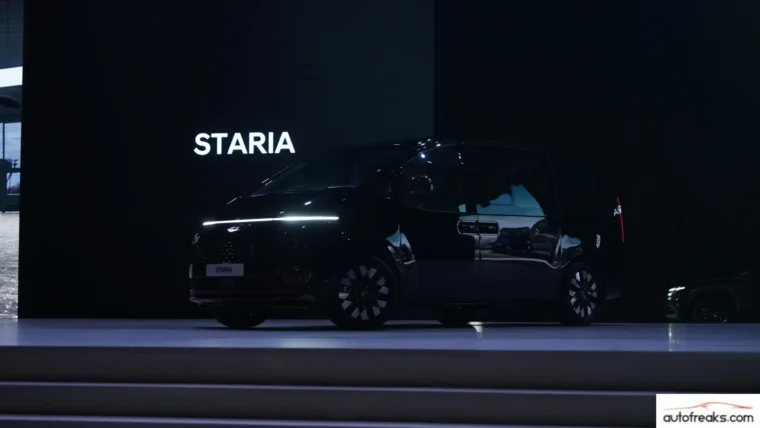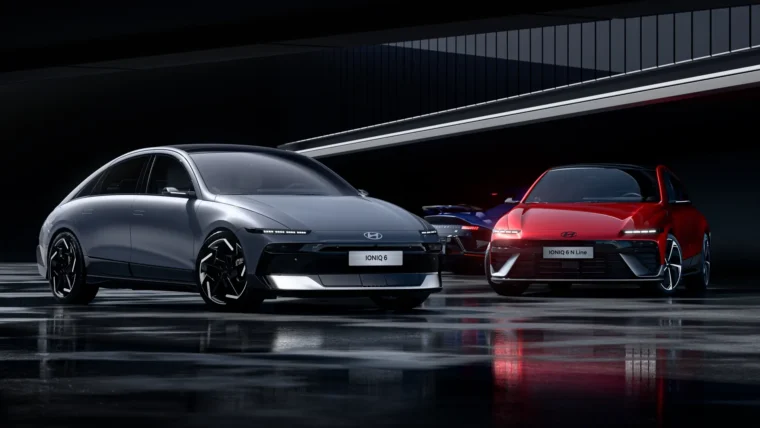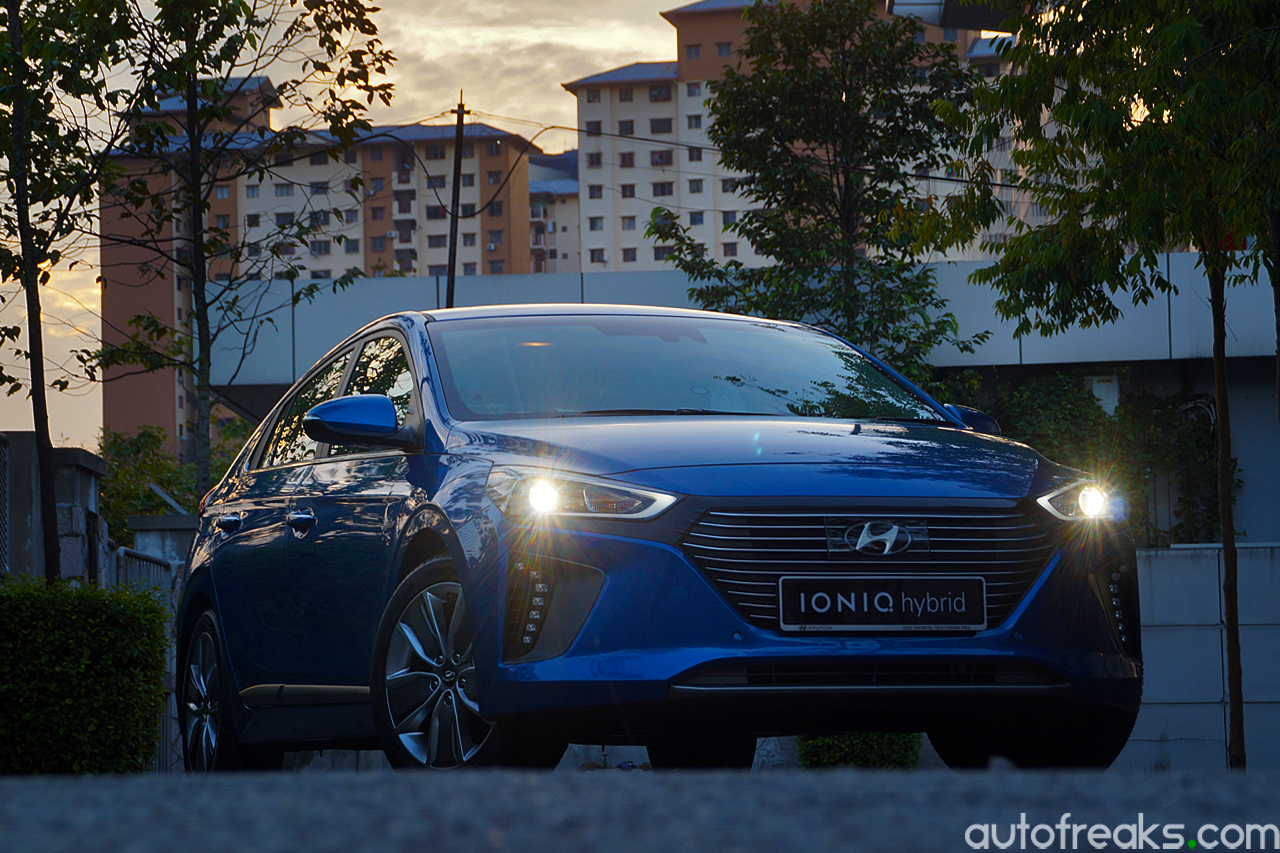
Hyundai is serious about making good cars. The South Korean company recently unveiled three variants of the Ioniq globally, an EV, PHEV and a regular hybrid. For the Malaysian market, we get the latter.
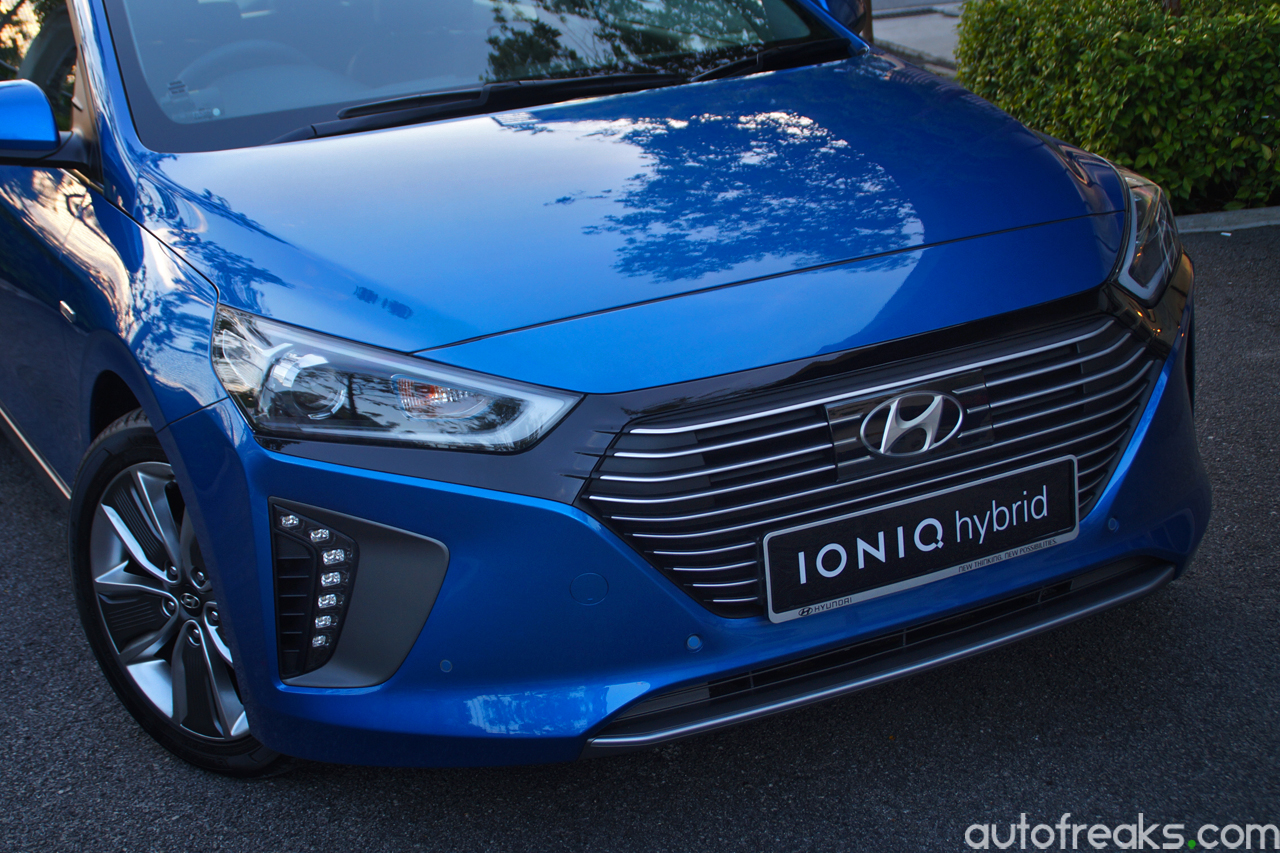
Photos of the new Hyundai Ioniq were leaked online a month before the model was officially launched, which featured typical hybrid styling that improves overall aerodynamics, various fins for optimizing air flow and alloy wheel covers that act as air curtains. However, what sets the Hyundai Ioniq apart from its competition is the multilink rear suspension and six-speed dual-clutch transmission.
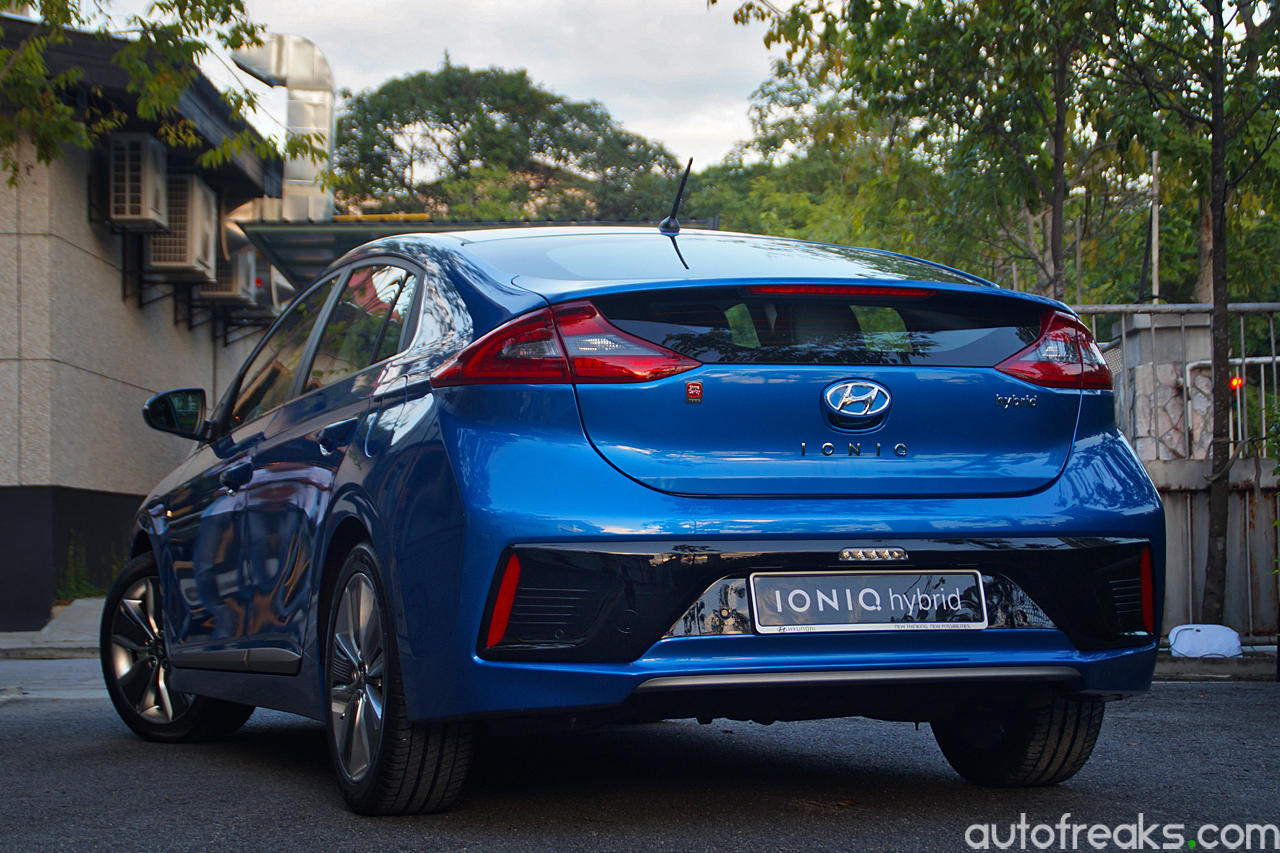
Before we get into the nitty-gritty stuff, Hyundai wants to point out that the Ioniq boasts an extremely slippery body, with a Cd rating of just 0.24. To achieve this figure, Hyundai has placed covers strategically throughout the entire car, including the engine undercover, front wheel deflector, front bumper lip, centre floor undercover, centre tunnel undercover, rear floor undercover and rear wheel deflector. On top of the various covers and deflectors, the Ioniq also benefits from a streamlined body profile plus a rear spoiler that improves downforce and reduce drag.
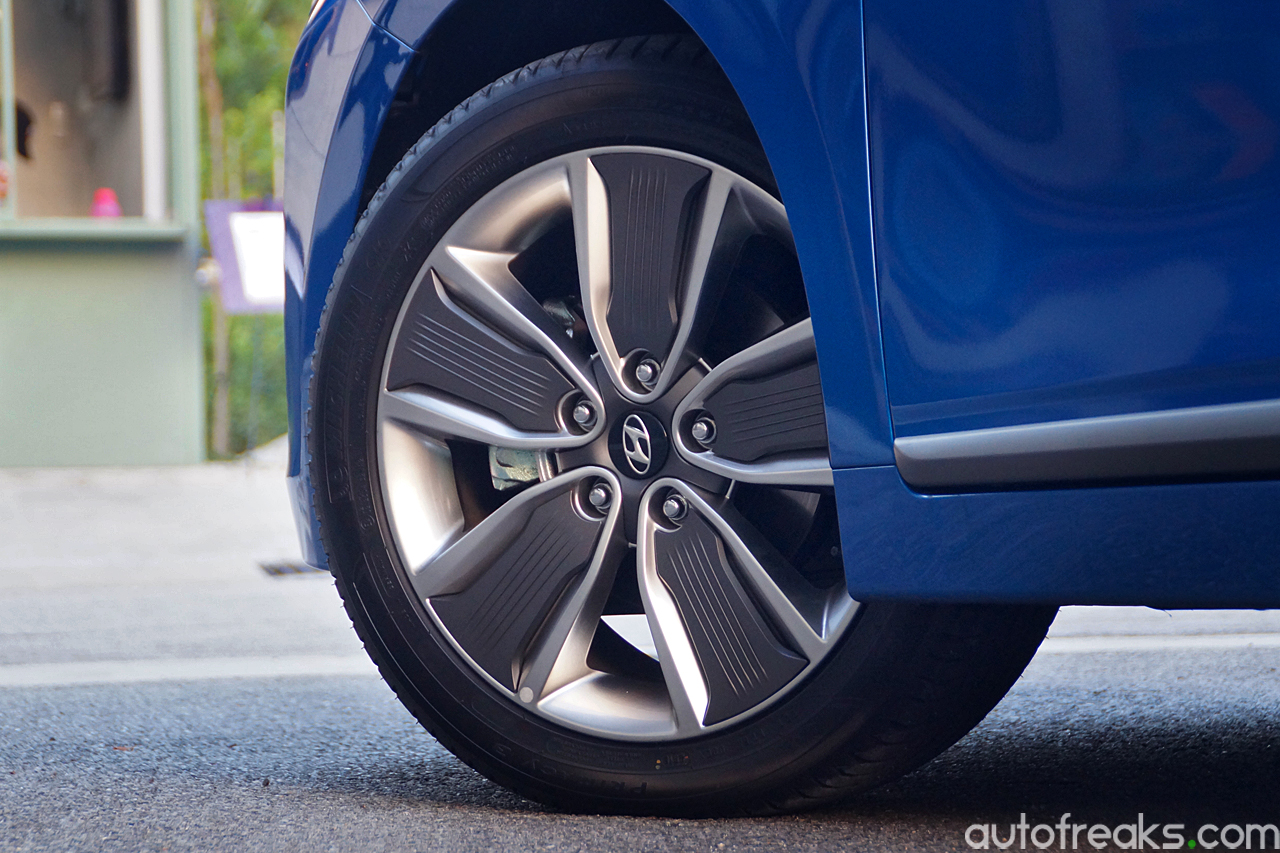
Under the well designed body is a platform that Hyundai designed specifically for hybrid and EV duties. In order to ensure that the body structure remains tough yet lightweight, Hyundai engineers have employed the use of high tensile steel for the Ioniq’s core structure and aluminium for the front lower arm, brake calipers, rear carrier and front knuckle. On top of that, the bonnet and rear liftgate is also made out of aluminium, allowing the Ioniq’s centre of gravity to be kept as low as possible. Total weight savings is 12.6 kg.
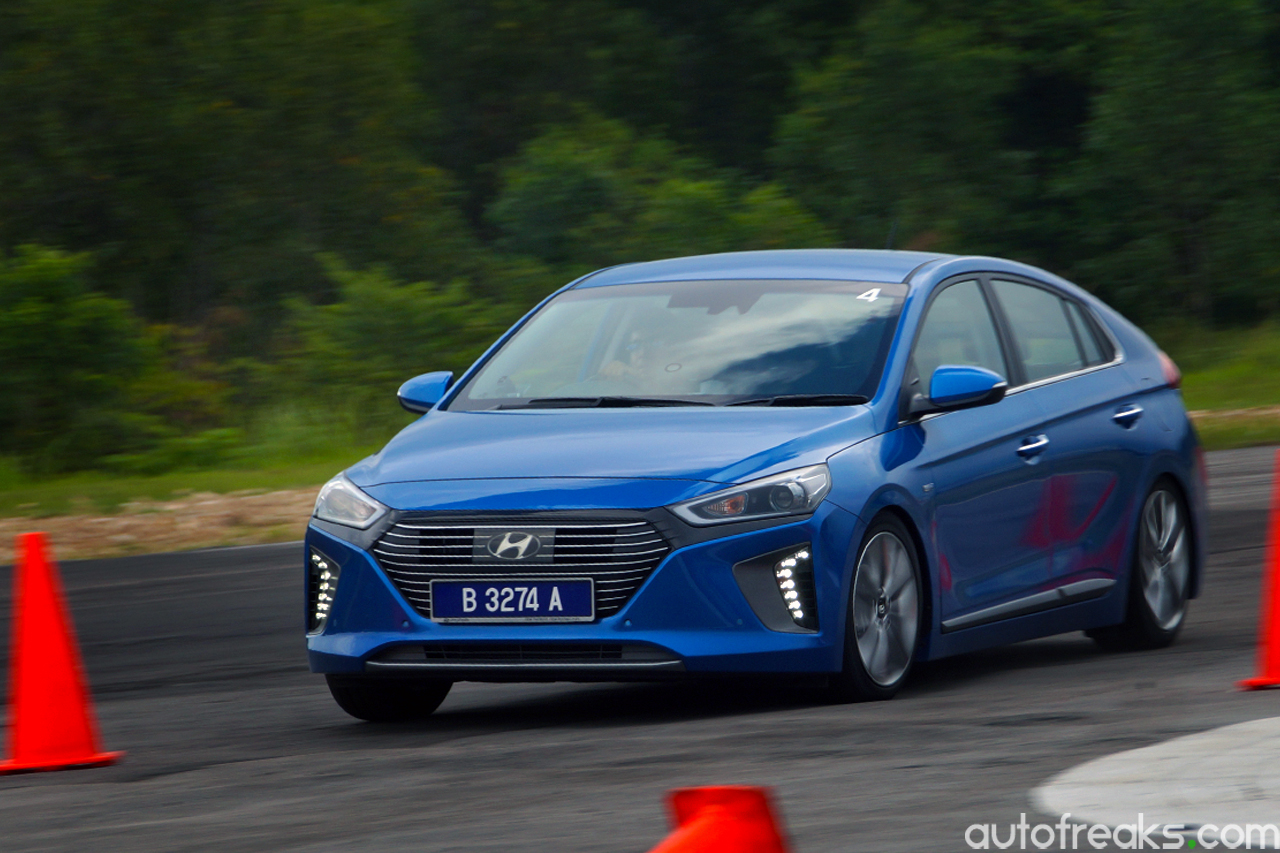
Power is derived from a 1.6-litre Kappa four-cylinder petrol engine that utilizes the Atkinson cycle. This Gasoline Direct Injection (GDI) output figures may not be earth-shattering ( 105 PS/147 Nm), but Hyundai points out that the Kappa mill does boast an industry-leading thermal efficiency of 40%. Drive from the engine is then routed through a traction motor before reaching the 6-speed dry dual-clutch transmission. Why a DCT? Hyundai says that by offering a DCT, the Ioniq will offer drivers a unique driving experience, in addition to the DCT’s class-leading power transmission efficiency of 95.7%.

For those having doubts about the DCT fitted in the Ioniq, Hyundai says that the Ioniq has gone through numerous torturous environments. For example, test engineers have tested the Ioniq on the German Autobahn, Seoul’s traffic jams, high-speed cruising in USA, high-temperature environment in Middle East, brutal cold temperatures at East Europe plus hot and rough roads of China. In short, Hyundai is confident of their in-house DCT.
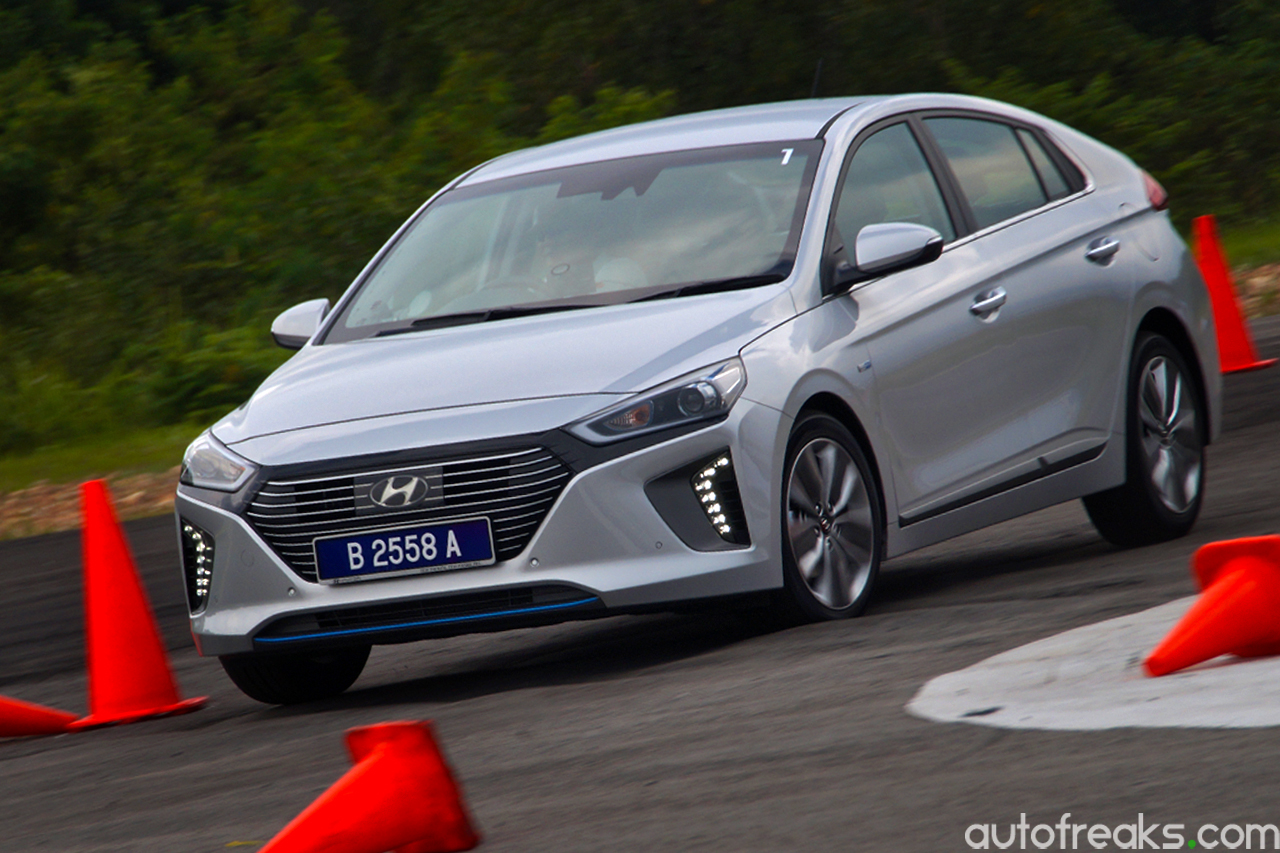
The interior, though basic, does offer a number of interesting features at this price point. The range-topping Ioniq HEV Plus boasts dual-zone air-conditioning with a “Driver Only Air Condition”, infotainment system with a seven-inch touchscreen display with Bluetooth and USB interface, flat-bottomed steering wheel, a unique centre storage compartment that can store a tablet or notebook PC and a full digital meter cluster. The leather-wrapped seats did provide sufficient bolstering and support, which is nice.
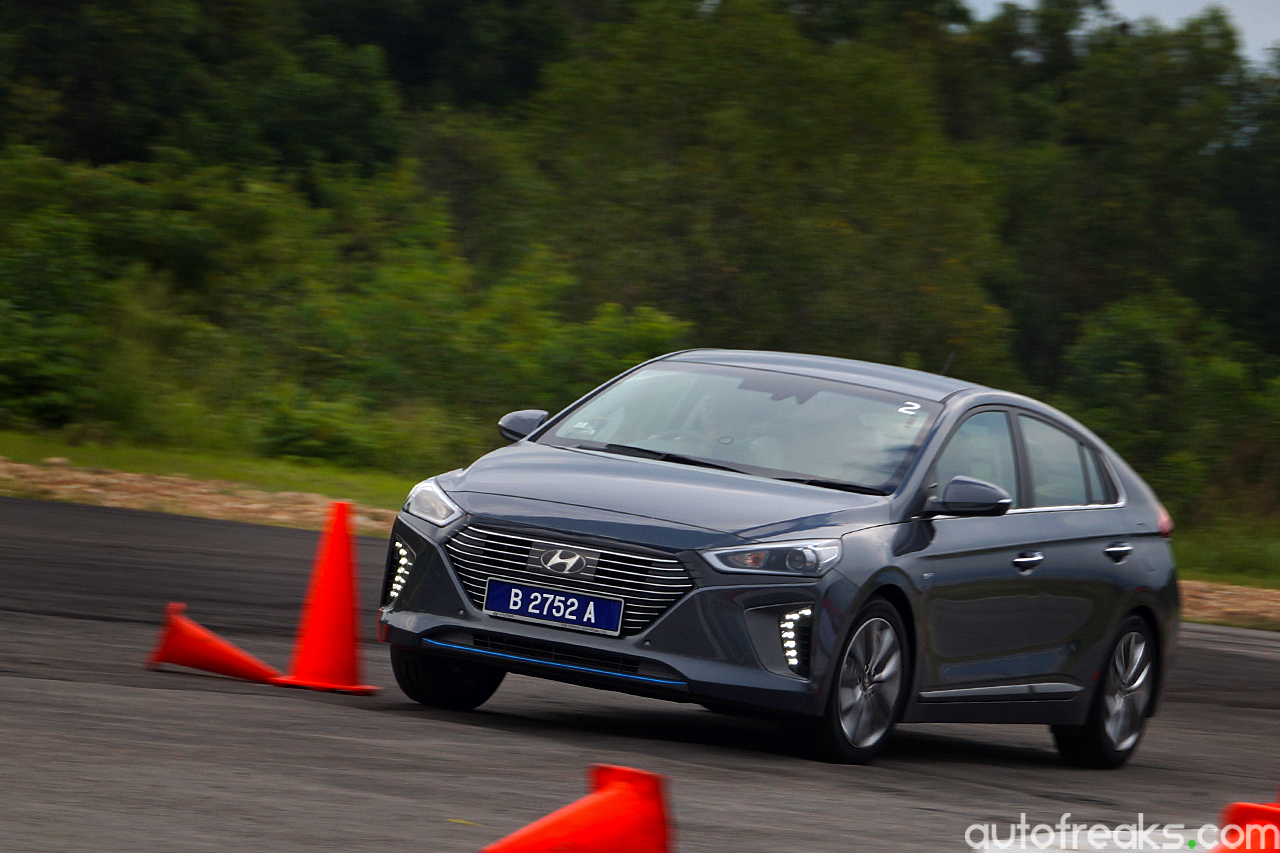
Onwards to the driving experience of the new Ioniq. Upon starting up, the Ioniq by default uses the battery for movements, only starting the engine when accelerating or going up a hill. In fact, it is seamless whenever the engine starts, especially when the Ioniq is in motion. Engine noise levels are well suppressed from the cabin, allowing for a really quiet drive. When in EV mode, the Ioniq practically glides forward and recharges its batteries via the engine or through its regenerative braking system.
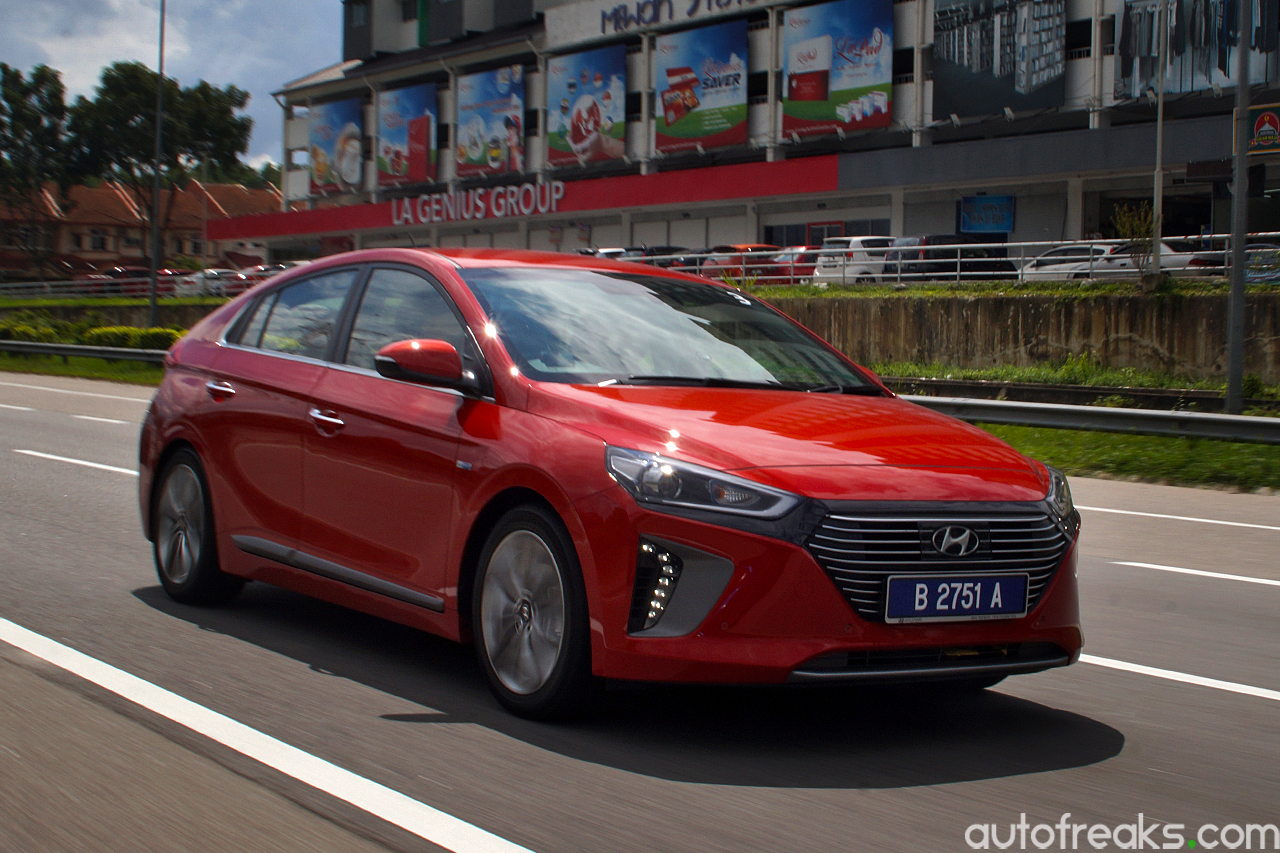
Speaking of regenerative brakes, the Ioniq can also recharge its batteries when the vehicle is coasting. However, with regenerative brakes, the brake pedal can get rather squishy at times, though brake bite is strong. Pedal travel may be a bit on the long side, but its not hard to gauge the point the brakes start biting. Our drive which included a hard braking test did prove that the brakes were sufficient to stop the Ioniq when needed.
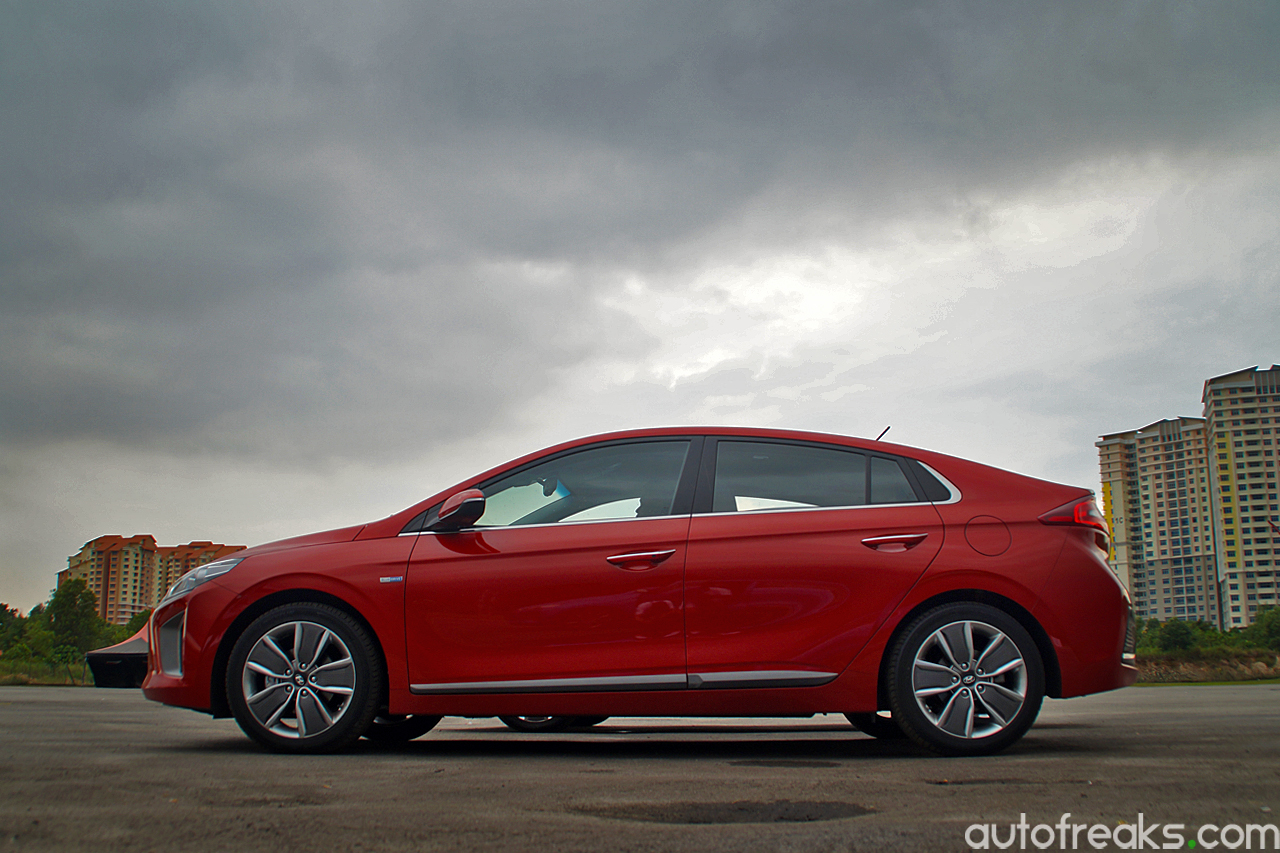
Thanks to its hybrid nature, torque delivery is a strong point for the little Hyundai. Combined system output is roughly 139 hp and 265 Nm, so acceleration is strong, even for a small 1.6-litre naturally-aspirated mill. I did notice that in-gear acceleration to be a bit wanting at times, though for the most part the Ioniq delivers. Off the line, the Ioniq accelerates with sufficient urgency, with the six-speed dual-clutch working hard shifting gears. During my time with the Ioniq, I also noticed that the Ioniq shifts gears rather sedately, unusual for a dual-clutch unit.
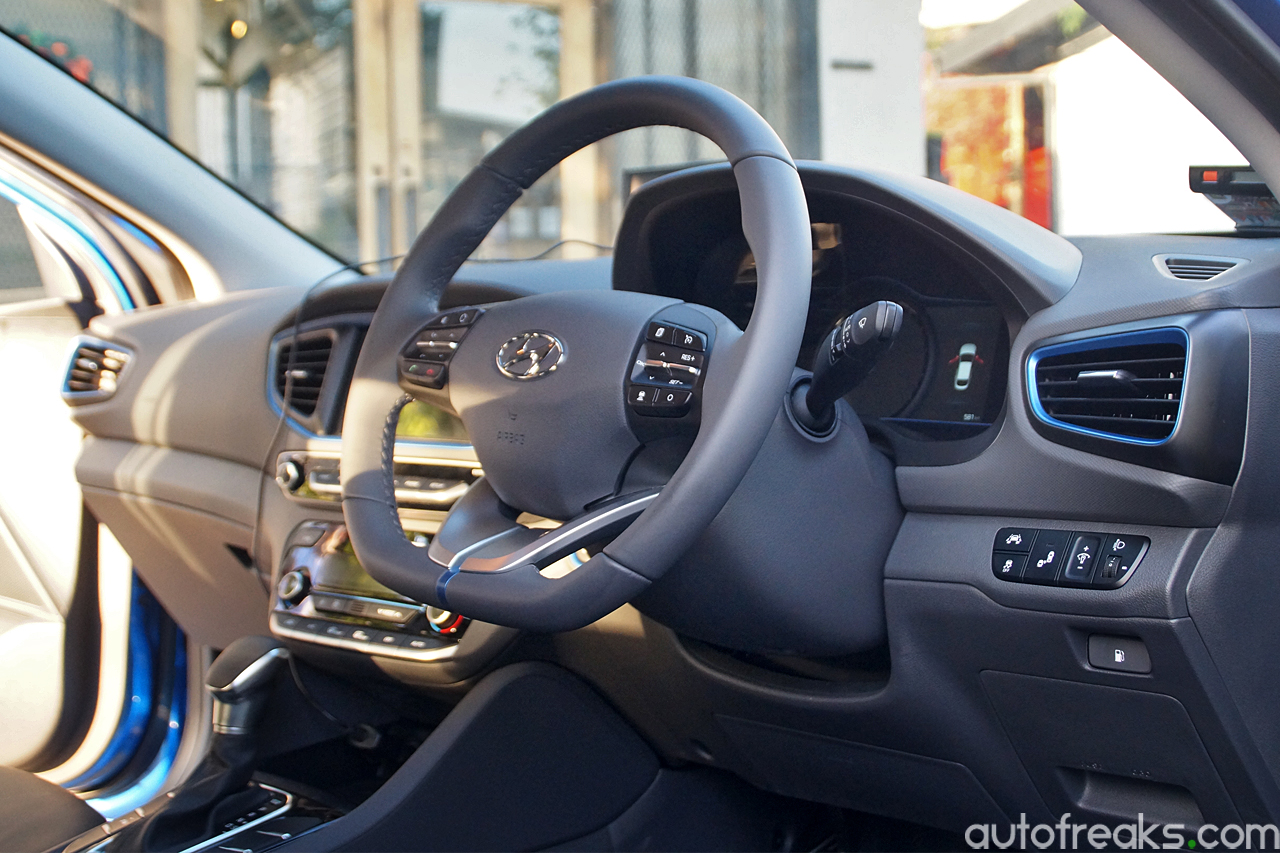
On the move, the Michelin rubbers emit little to no noise and the suspension tuning is spot-on. It has been a long time coming, but Hyundai has finally nailed the ride and handling with the Ioniq. Through twisty turns, the Ioniq leans a little and stops there, allowing the driver to fully exploit the tyre’s limits. Even on rougher roads, the suspension is supple enough to iron out any unpleasant bumps, despite riding on thin 45-series rubbers. As for highway speeds, the Ioniq remains planted all the way to its electronically-limited top speed of 196 km/h. Mid-corner undulations also fail to upset the Ioniq’s balance, a definite plus point.
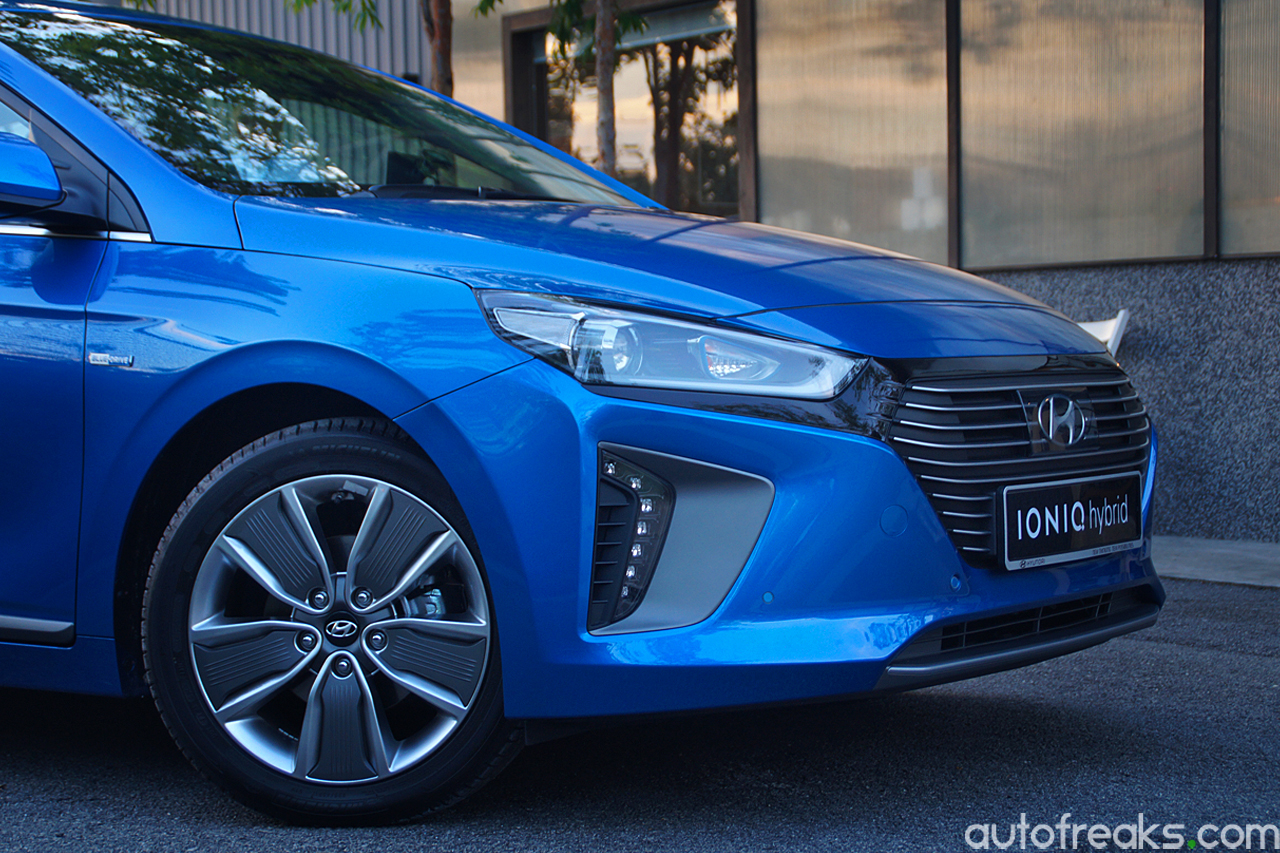
The rack and pinion type steering does little to offer road feedback, but is accurate enough. As the steering features variable weight, expect the steering to weight a little more during highway cruising. Weight of the steering is also altered when the Ioniq shifts into Sports Mode via the gear shifter. The heavier steering, though lack of feel does steer the Ioniq well enough. Sports Mode also changes the meter cluster, giving it a red theme and displays the engine’s RPM. When in normal mode, the meter cluster hides the Ioniq’s actual engine RPM, displaying only the vehicle’s speed prominently.
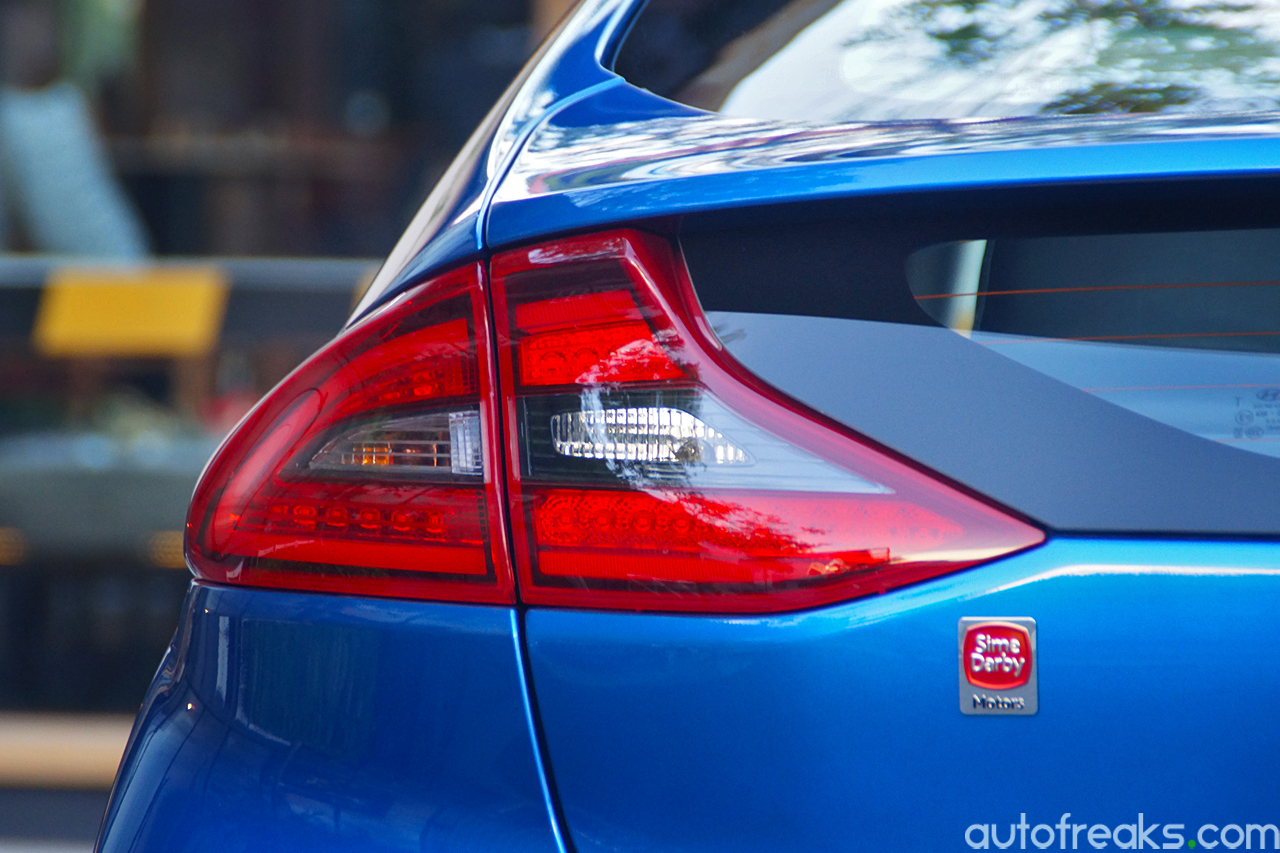
But what about fuel efficiency, you may ask? When I started the drive, the estimated range was a whopping 943 km. Impressive figure, considering that the fuel tank comes in at just 42-litres. Mind you, we were not gentle, as there were a number of full throttle runs, idling and high-speed cruising. The trip computer, at the end of the drive, returned a reading of 6.5L/100 km. Distance to empty was in the high 700 km range. I reckon once the engine has properly broken in, fuel economy will definitely improve.
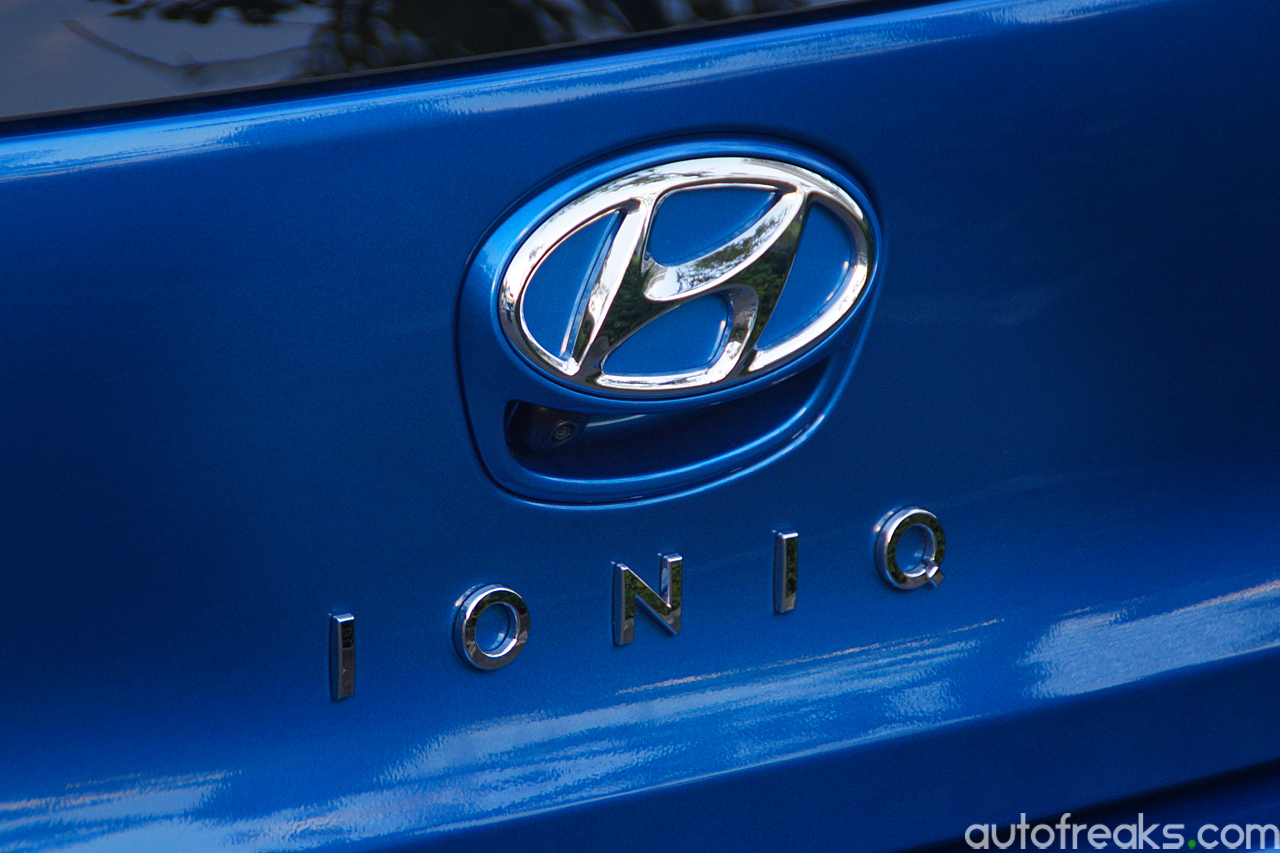
In a nutshell, the Hyundai Ioniq has a lot going for it. Standard equipment is generous and safety kit is class-leading. After a quick check, I found that the Ioniq is in fact one of the cheapest new vehicles in Malaysia to offer Qi Wireless Charging, Blind Spot Detection (BSD), Lane Keeping Assist System (LKAS), Autonomous Emergency Braking System (AEB) and a Smart Cruise Control system, on top of the standard 7 airbags, ESC and VSM. If you’re still on the fence, I would wholeheartedly recommend you to give the Ioniq a chance and try it out for yourself. Who knows, the Ioniq may just surprise you.
Specifications: 2017 Hyundai Ioniq Hybrid
Price: RM114.165.87 (OTR with insurance)
Engine: 1.6-litre inline-4 Kappa GDI
Horsepower: 105 PS@ 5,700 rpm
Torque: 147 Nm @ 5,000 rpm
Electric Motor Horsepower: 43.5 PS
Electric Motor Torque: 170 Nm
Transmission: Six speed dual-clutch transmission
Other posts by AF Newsdesk





